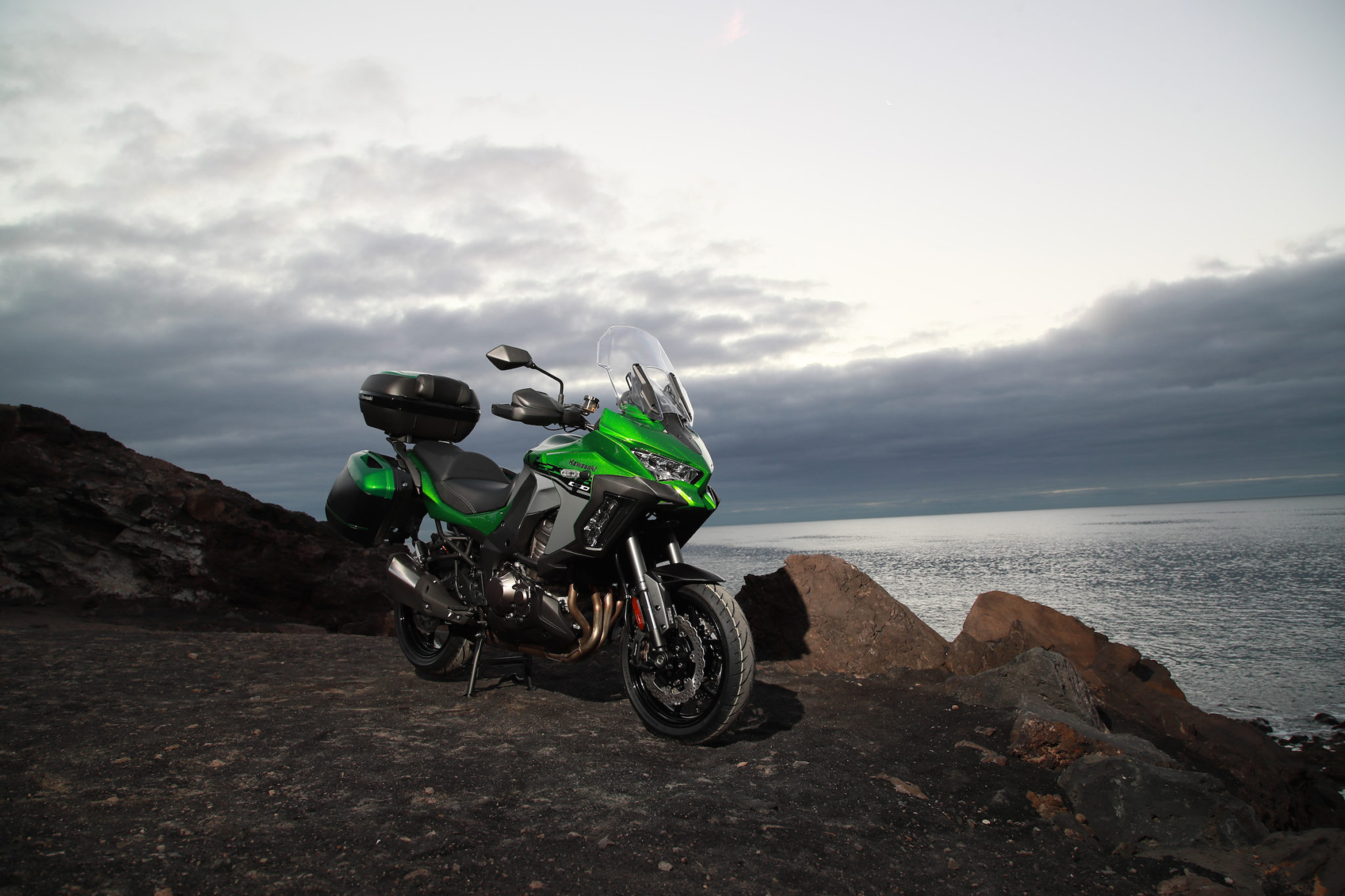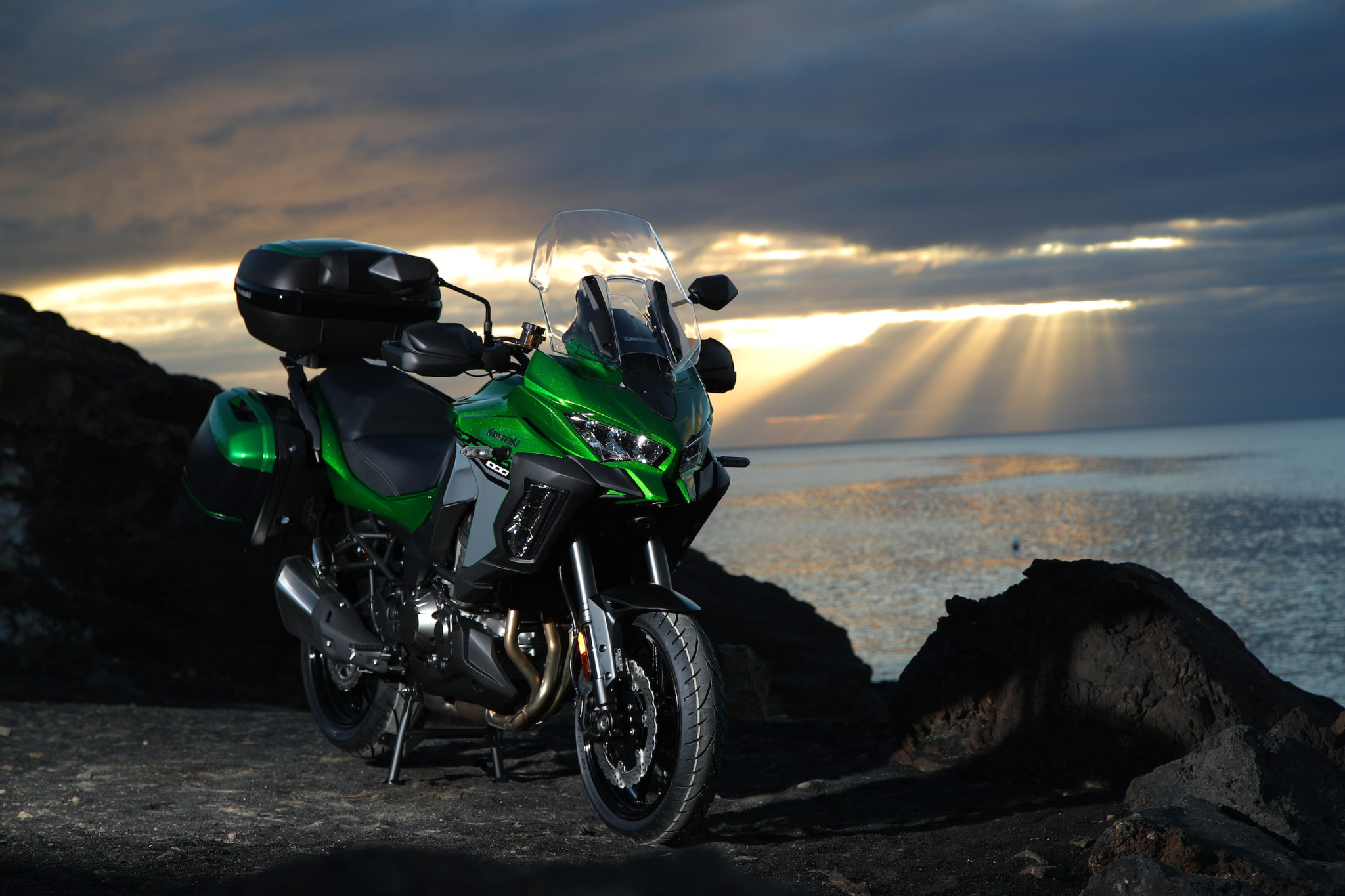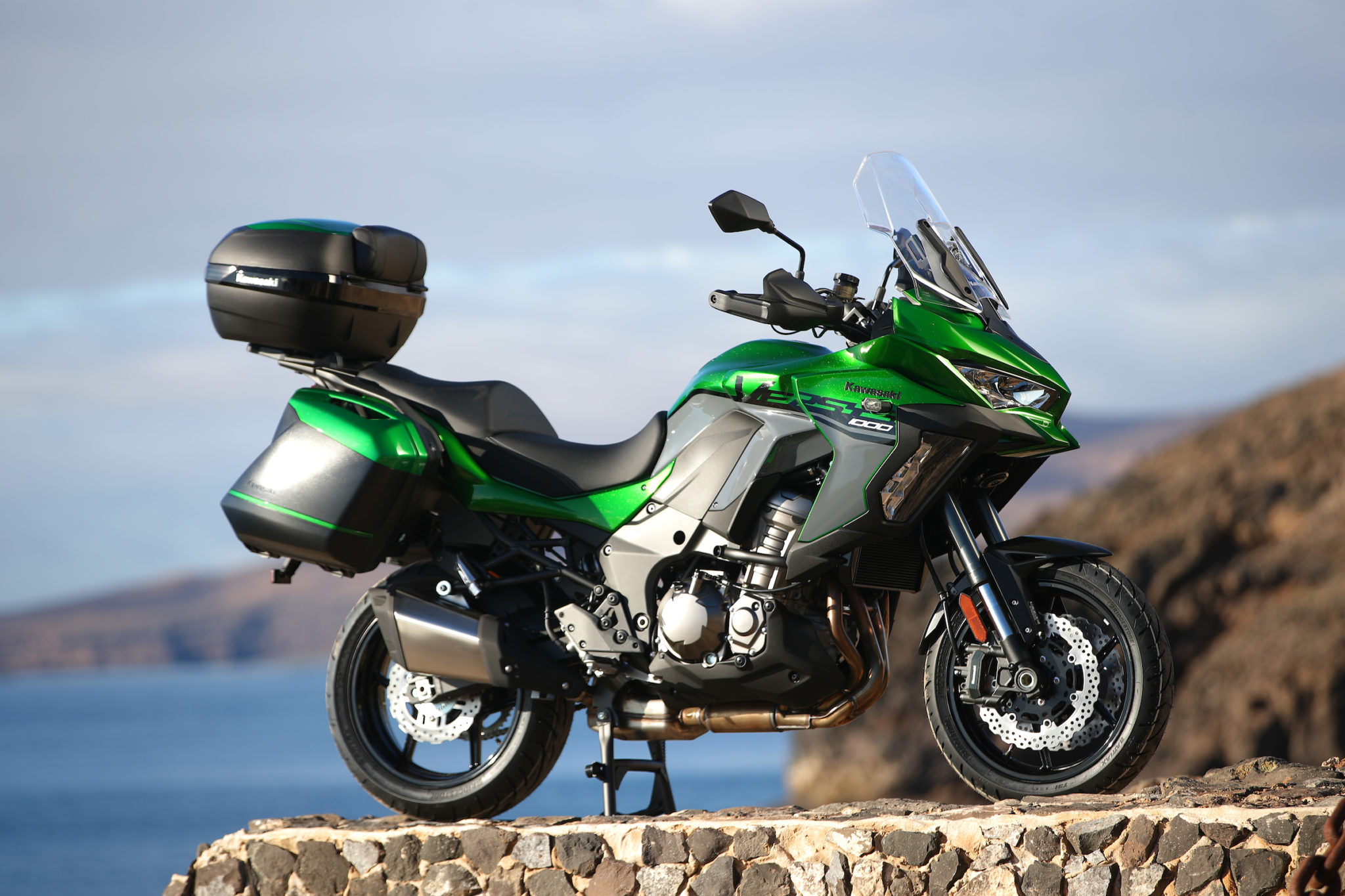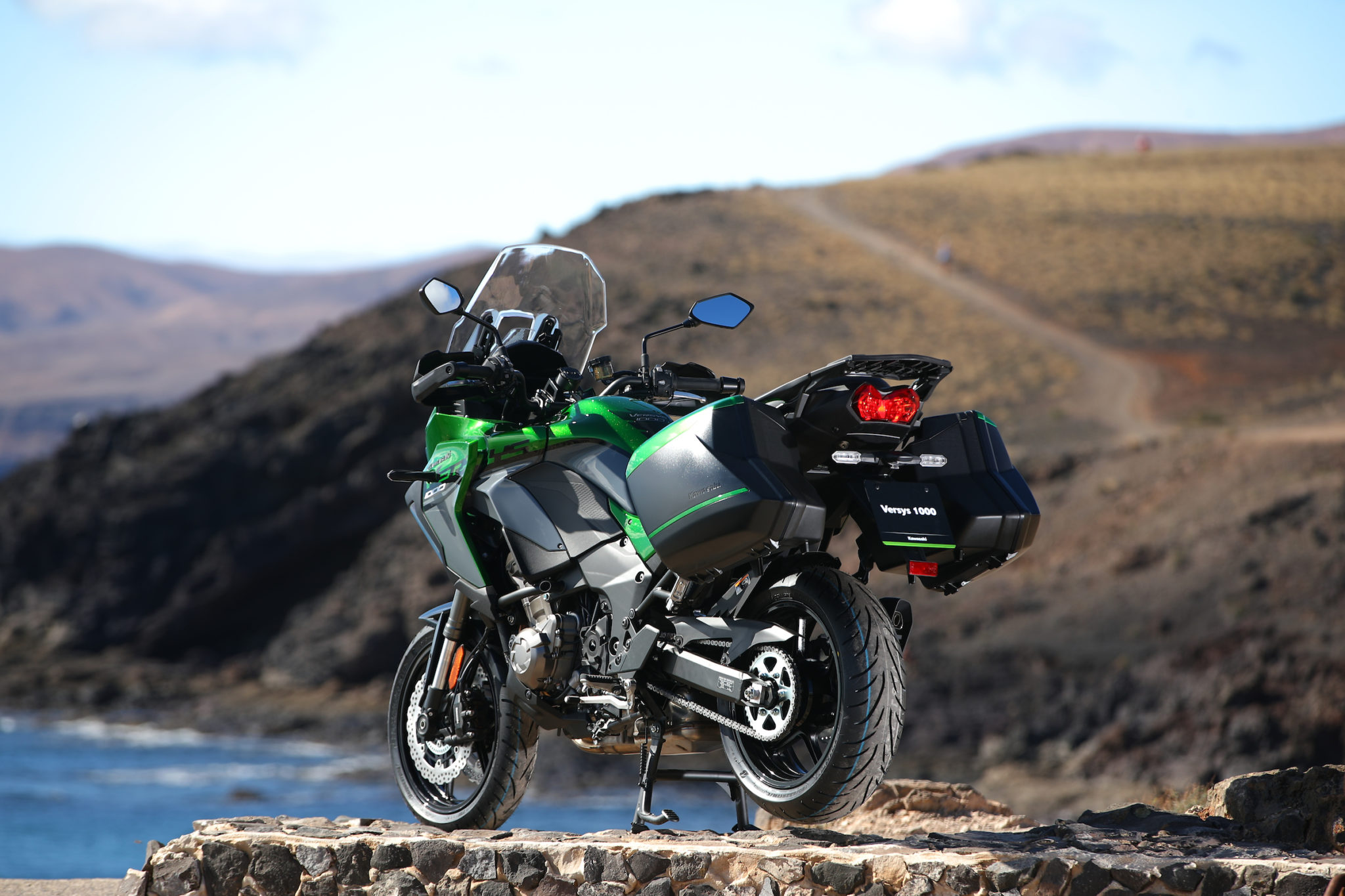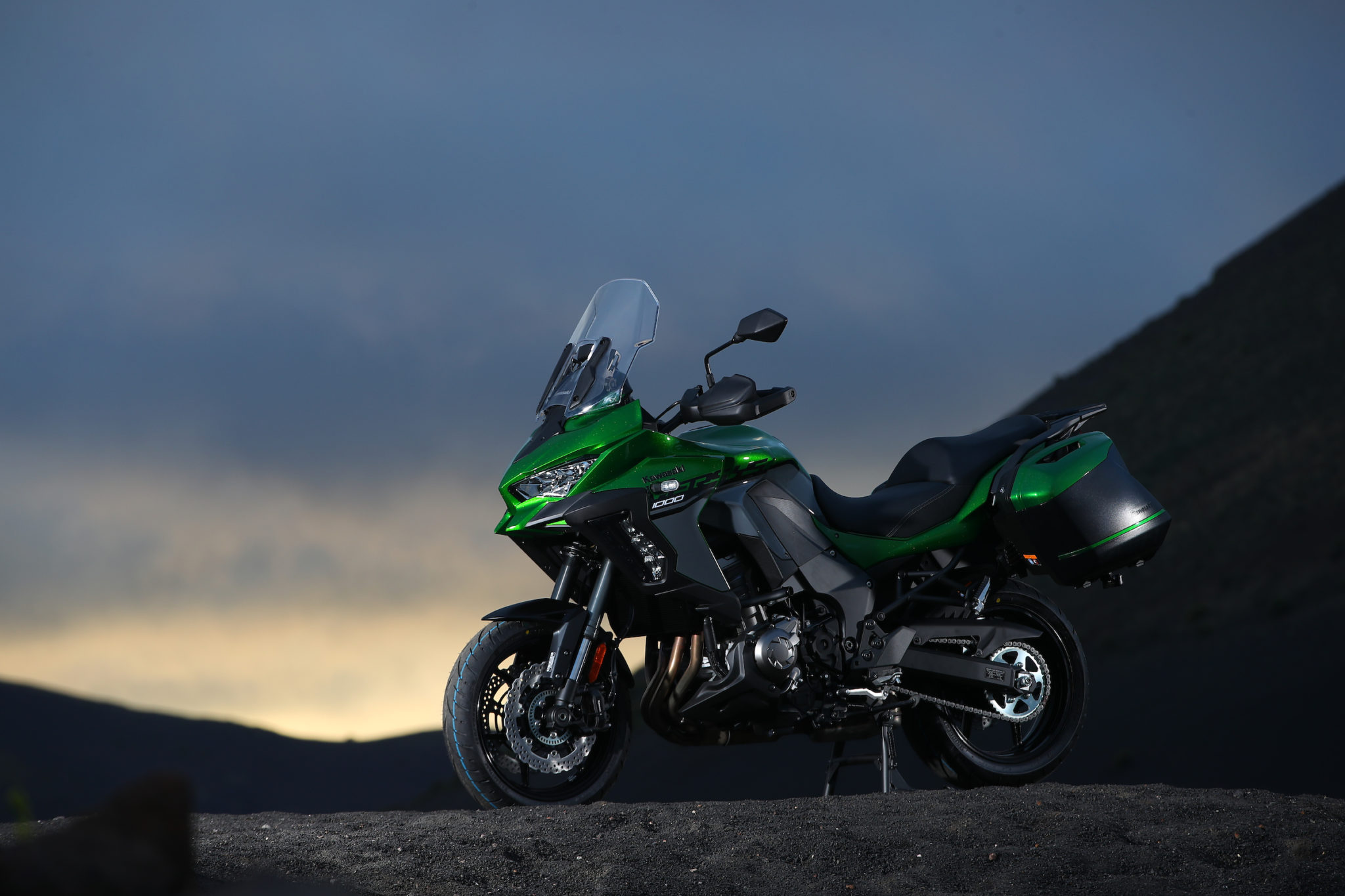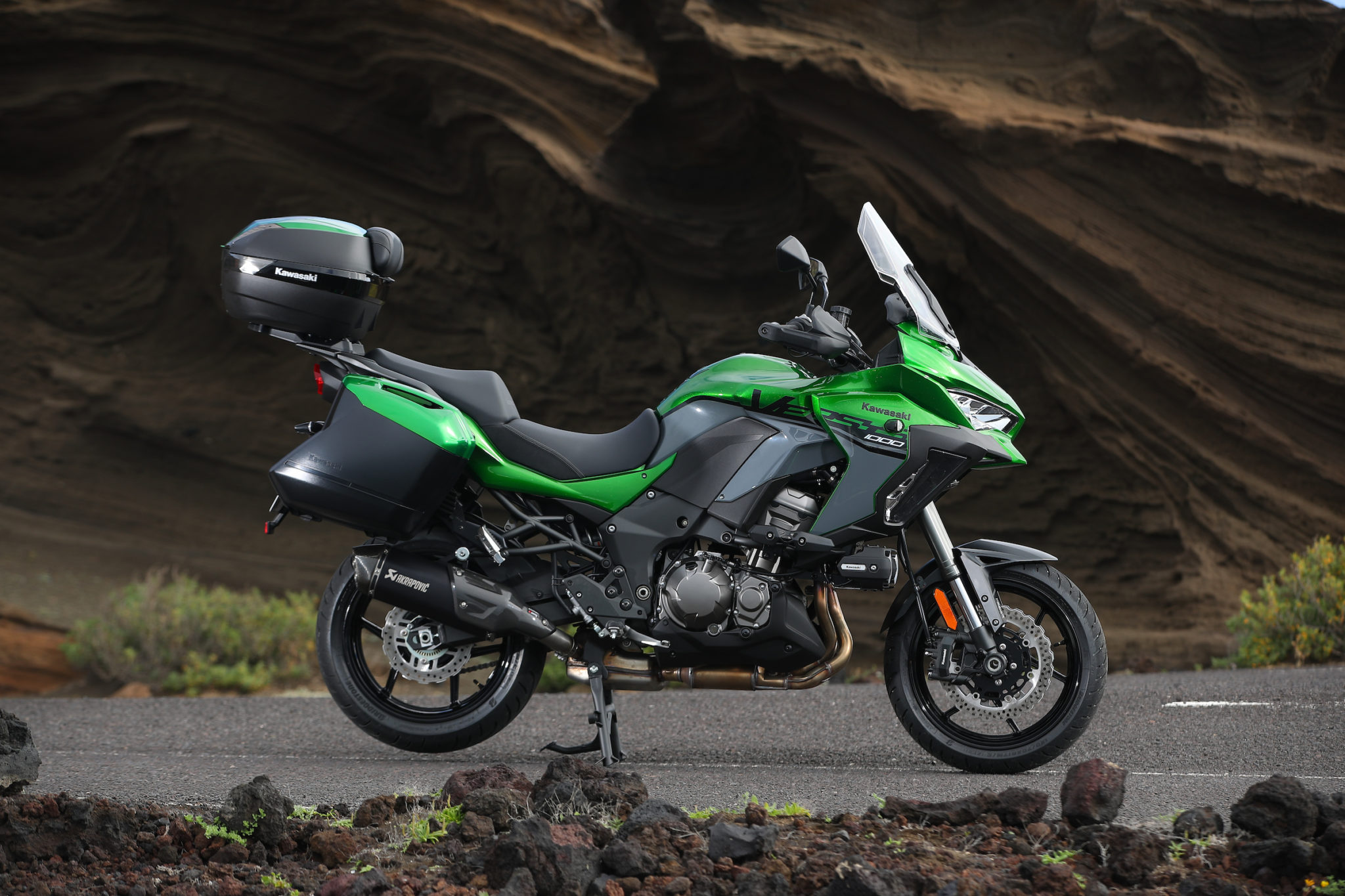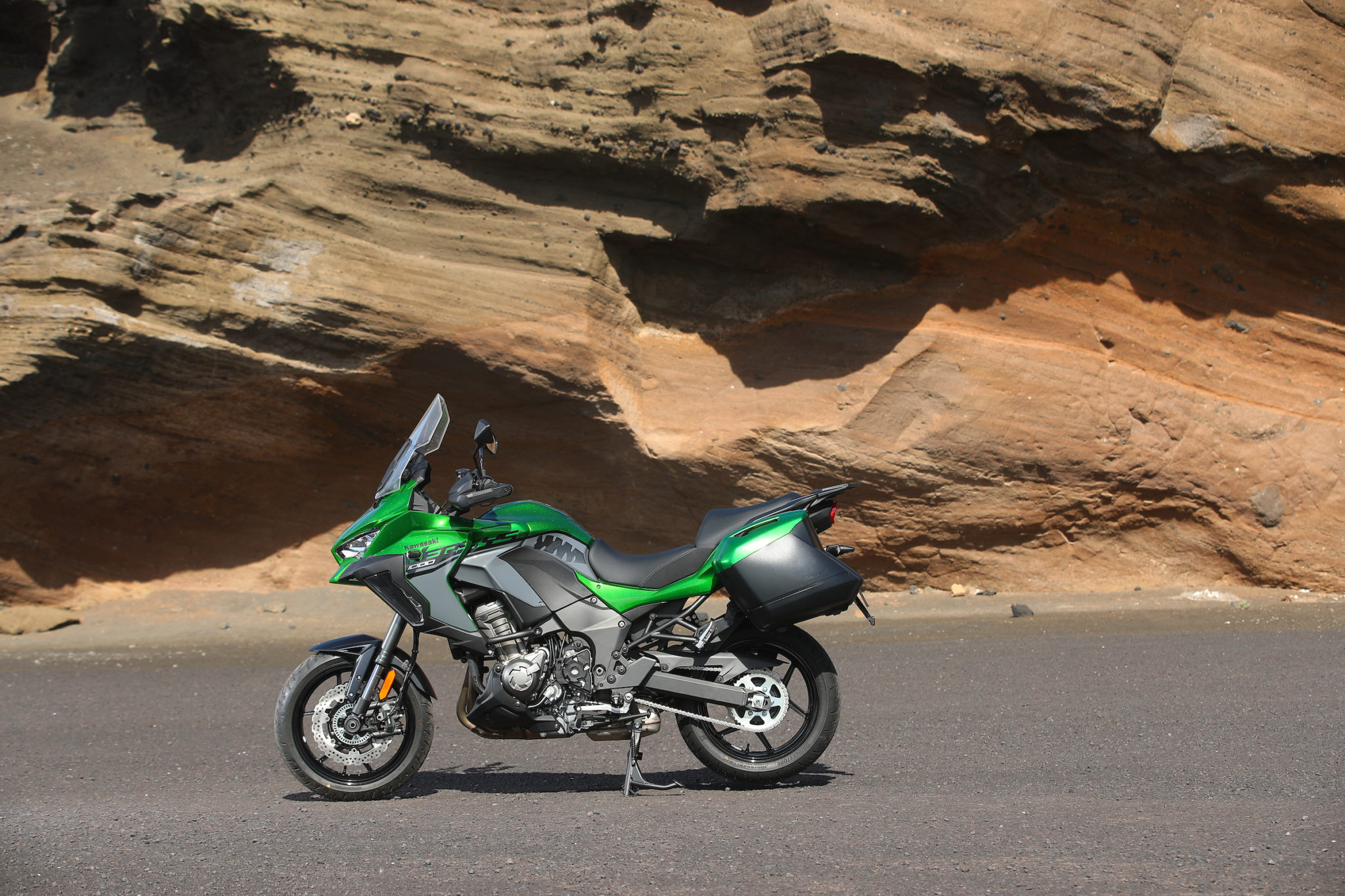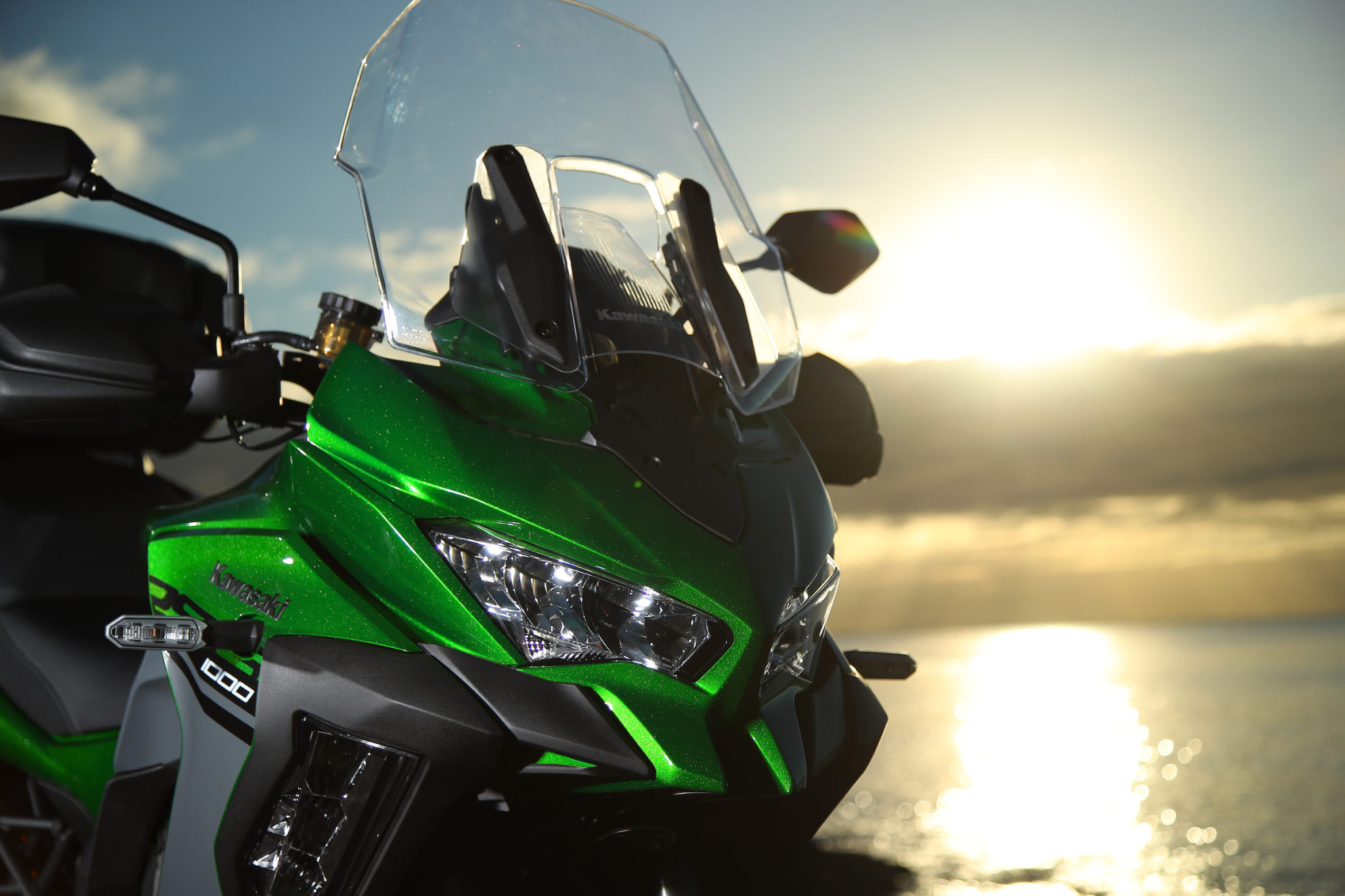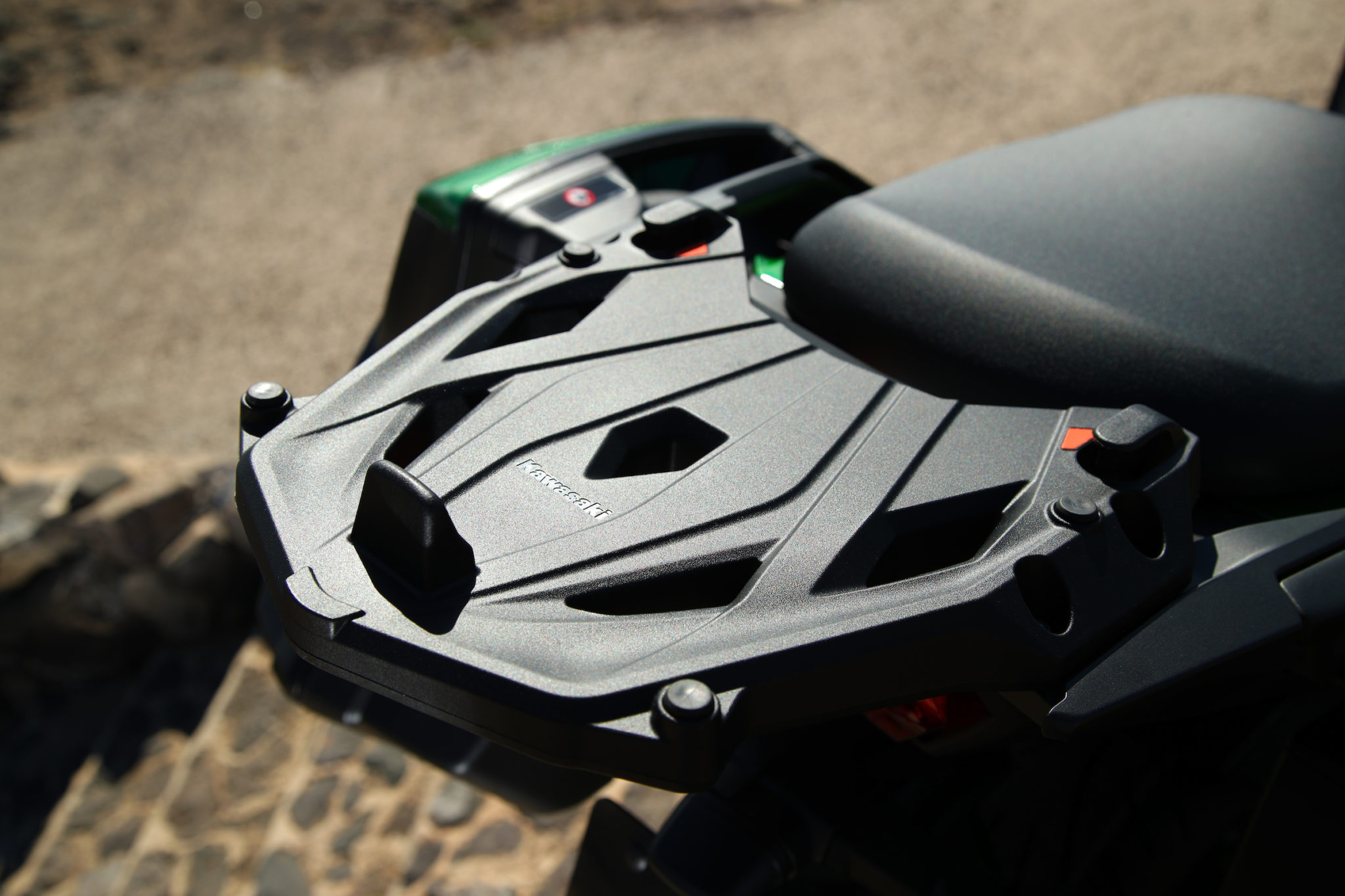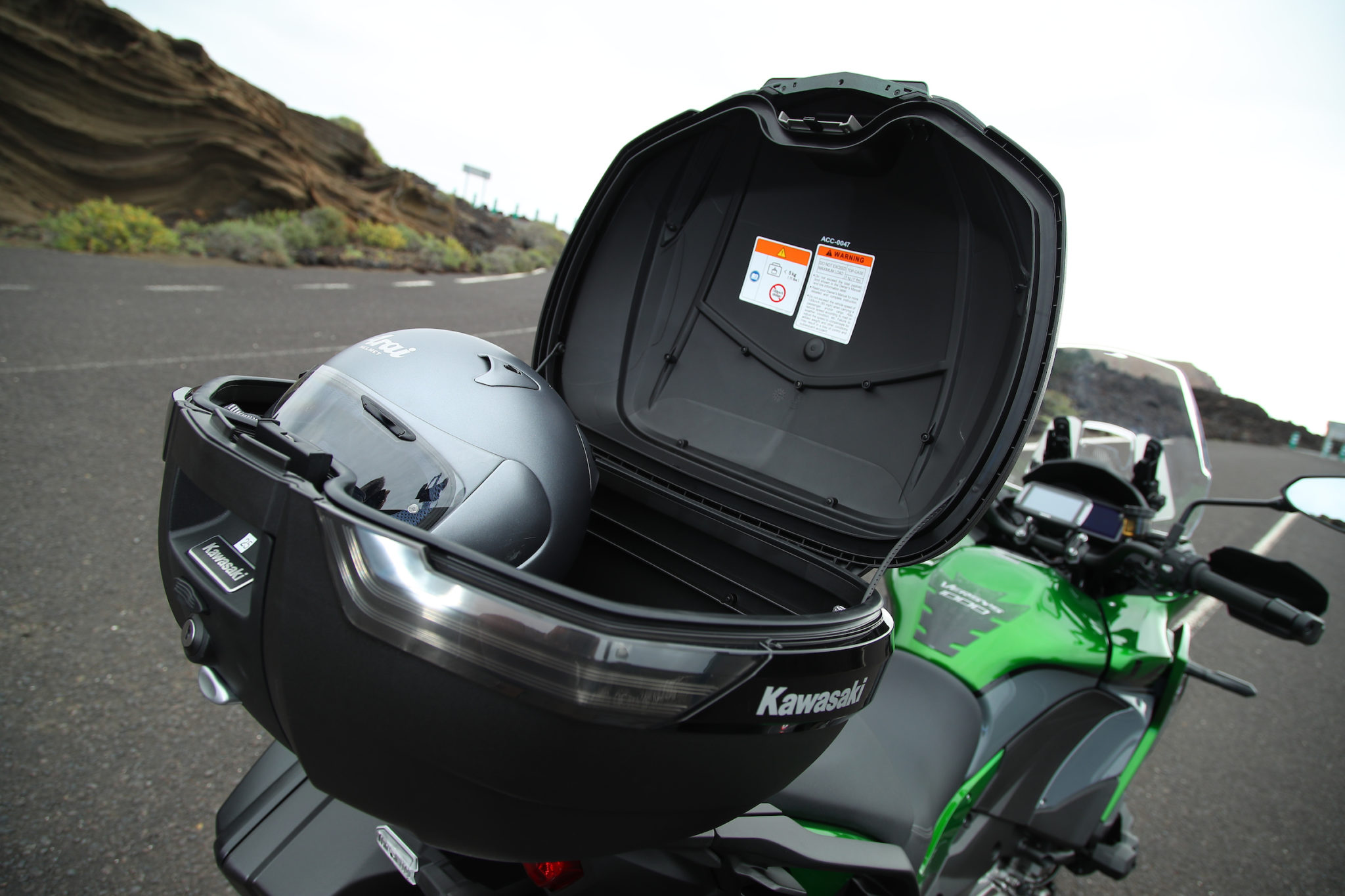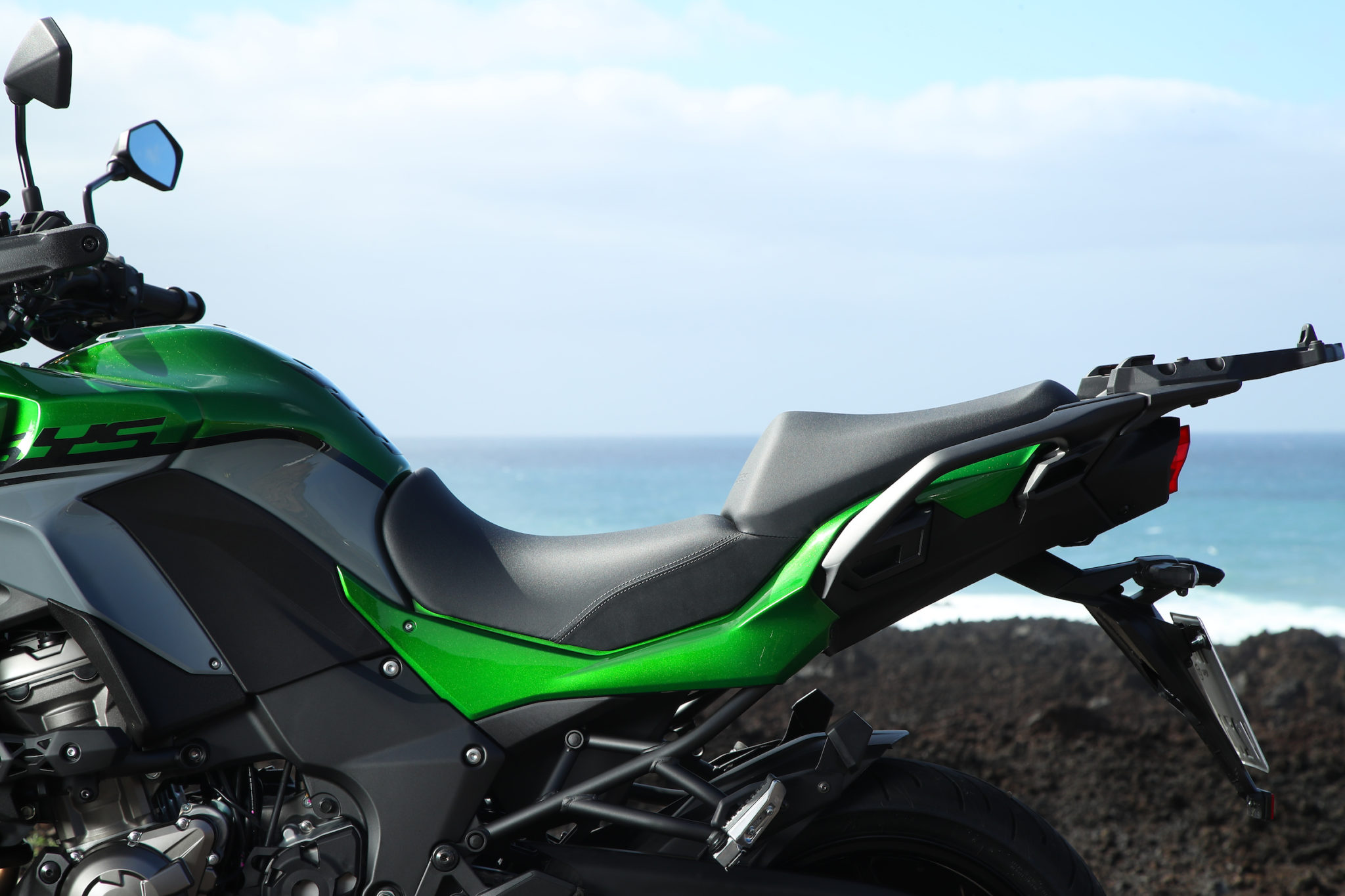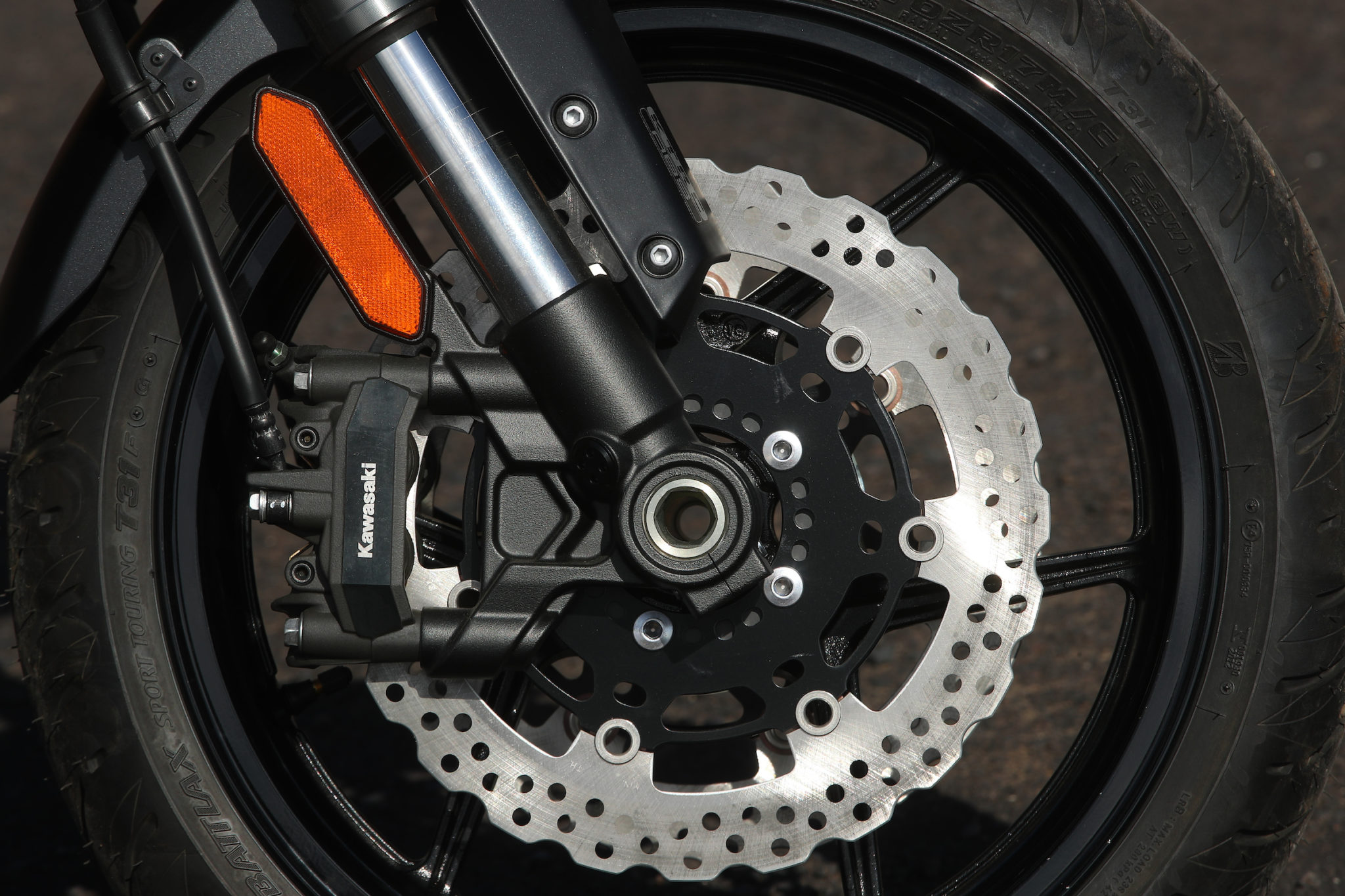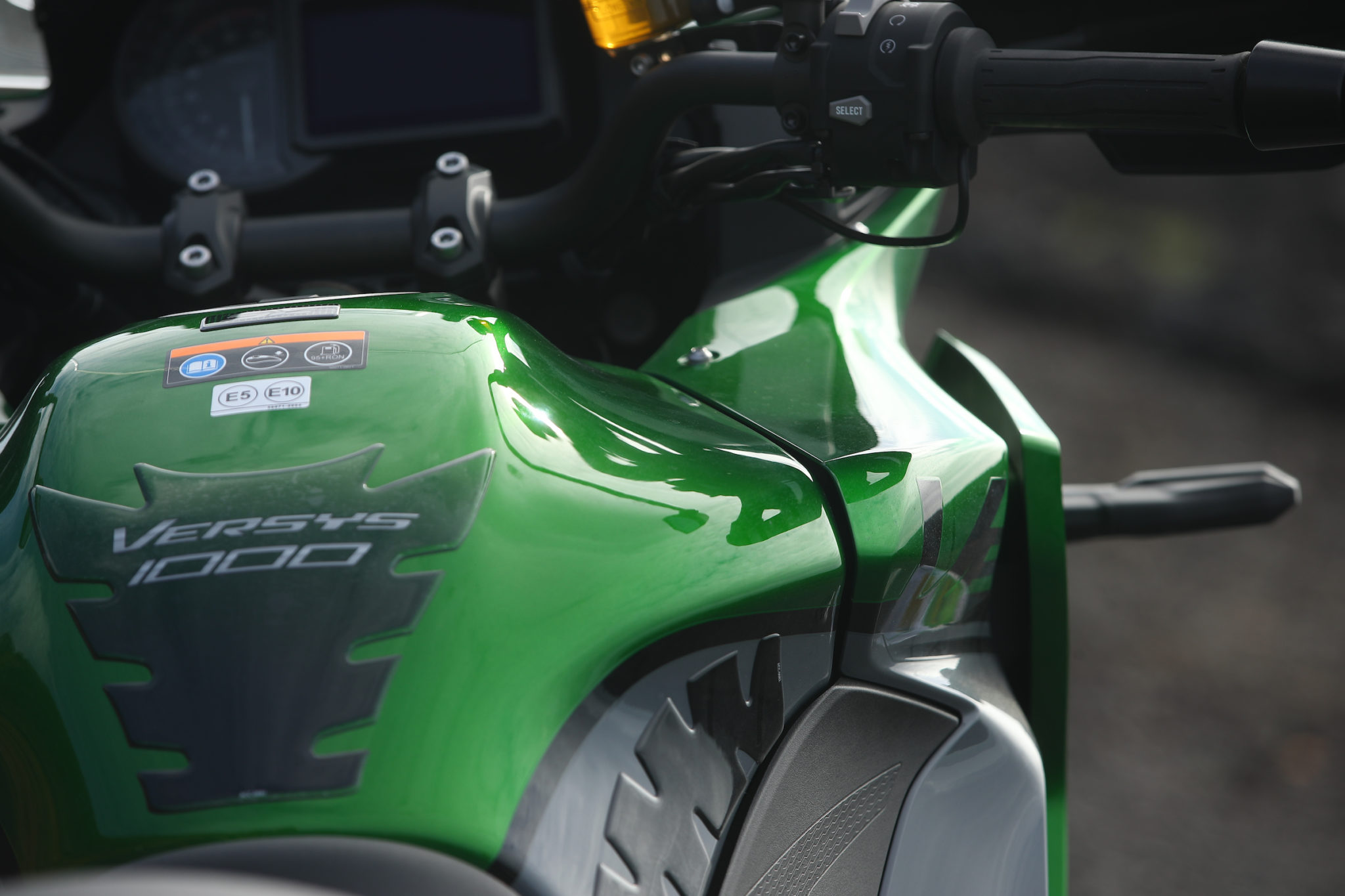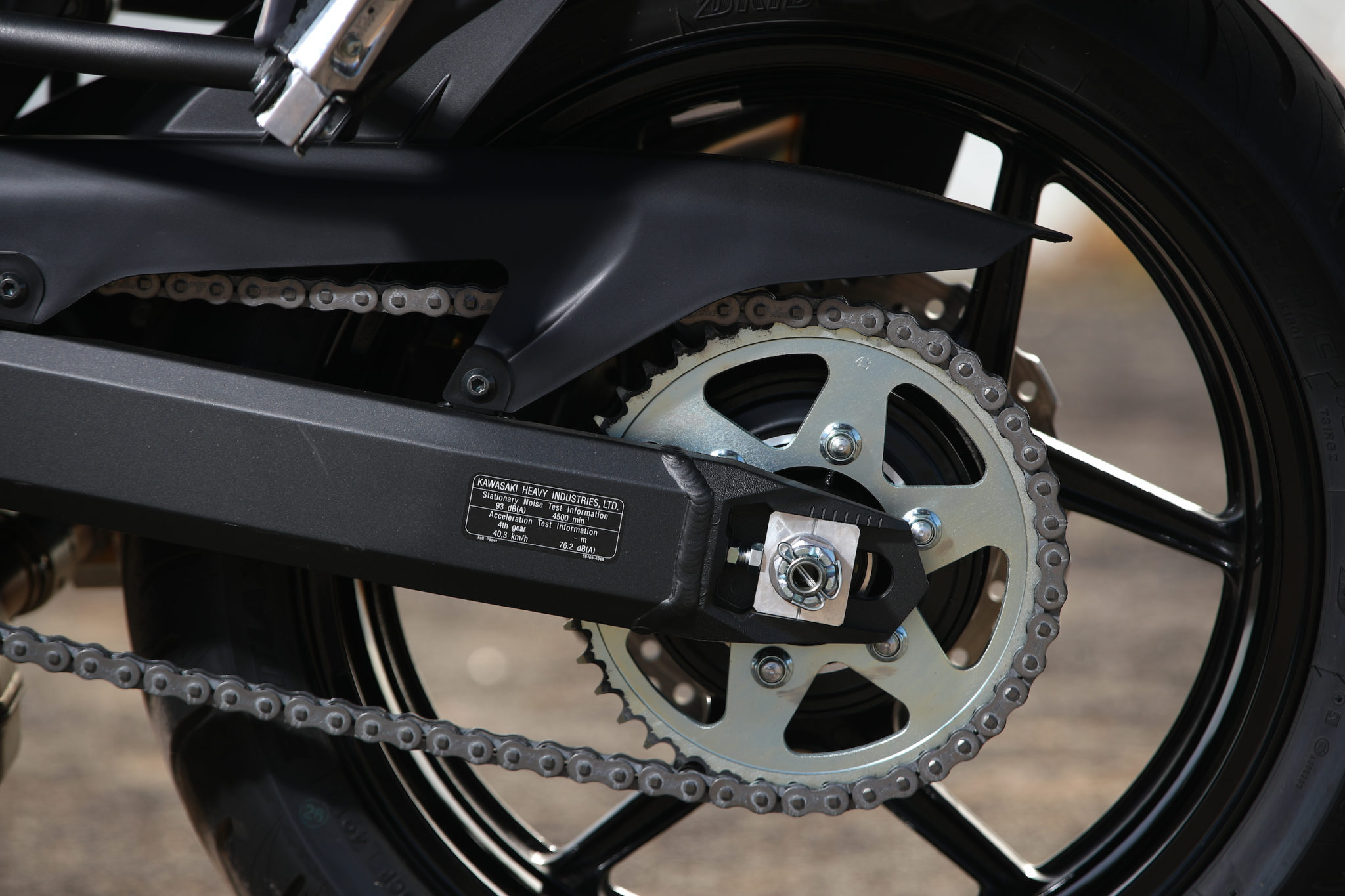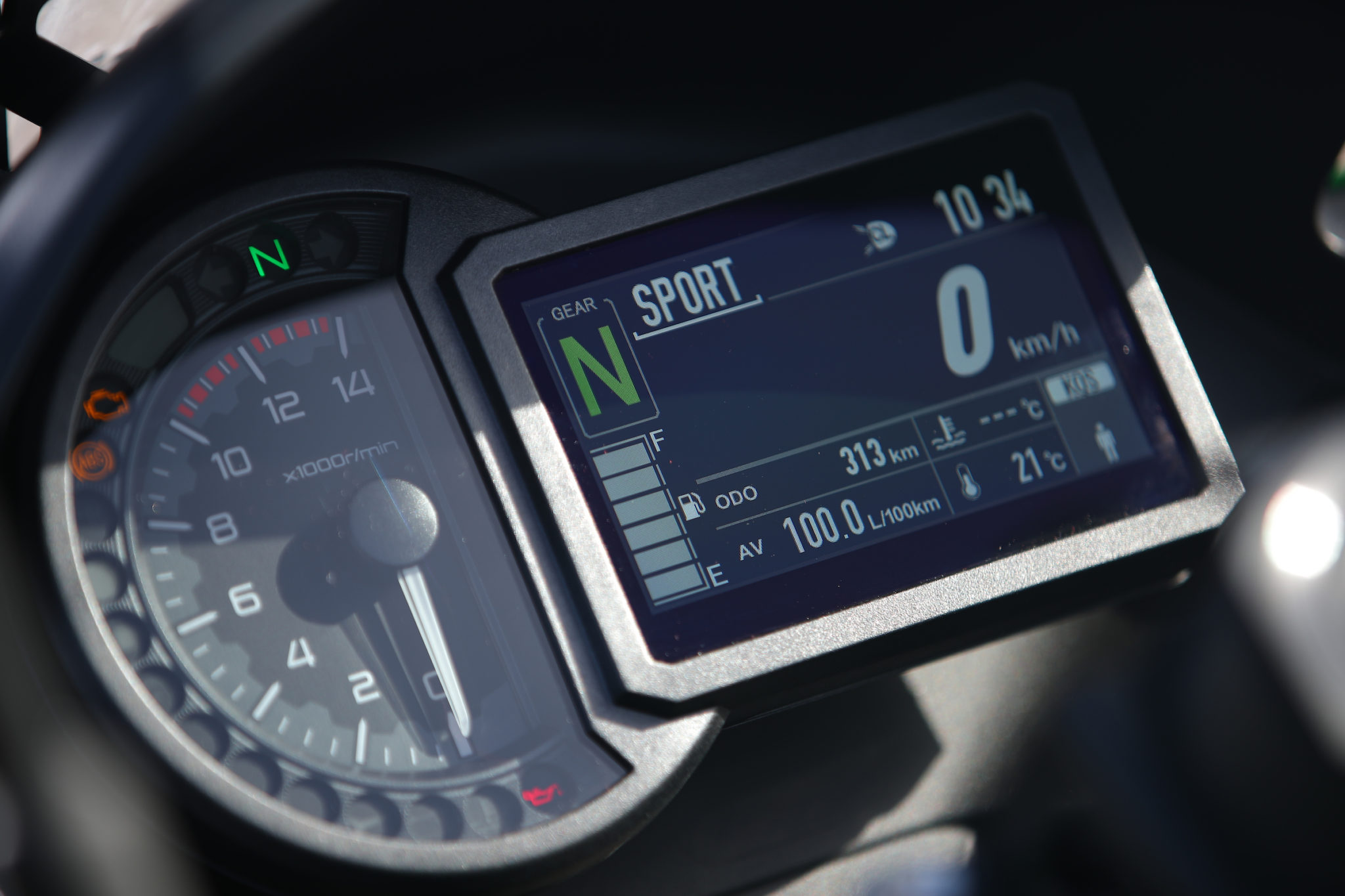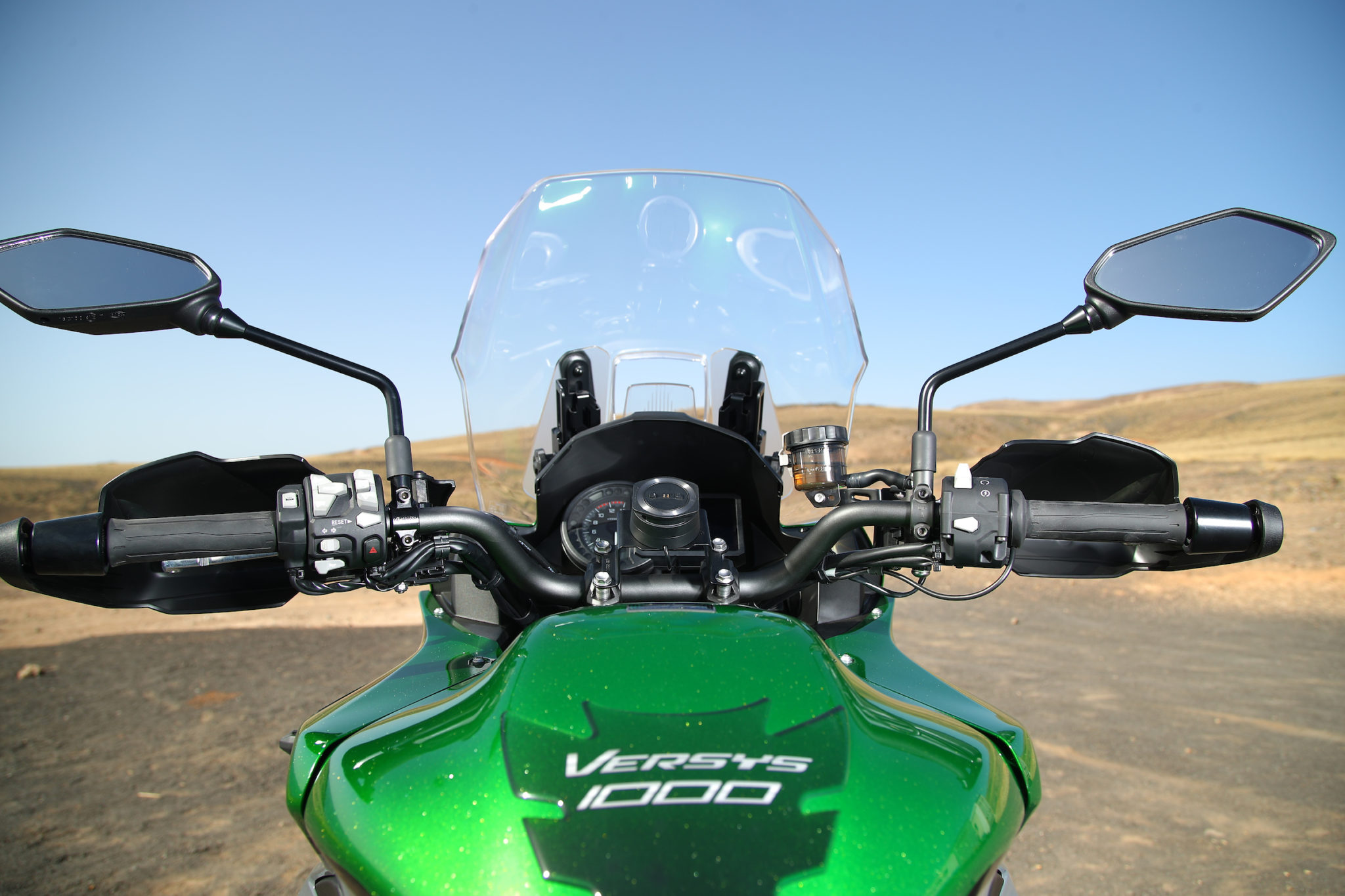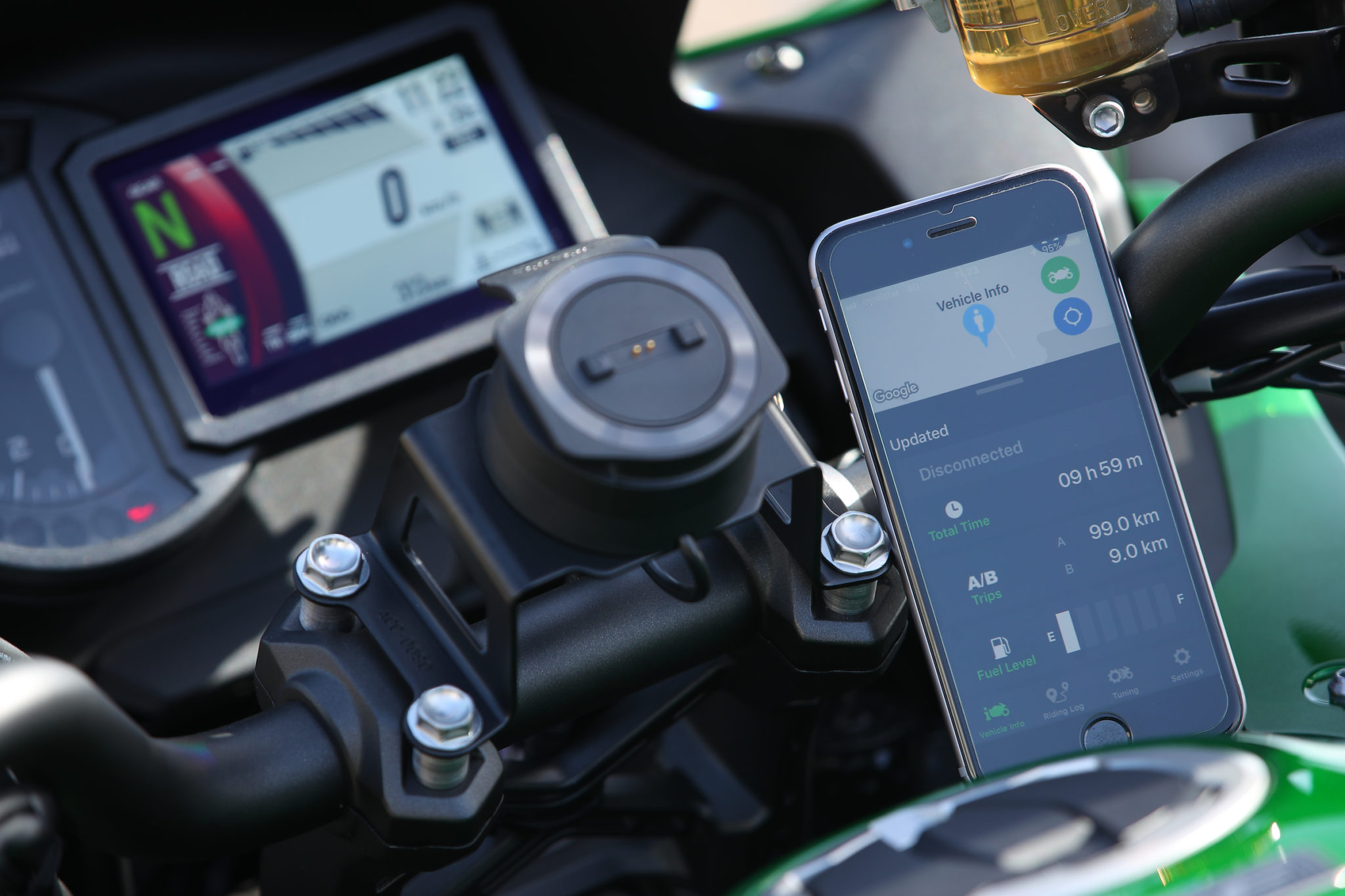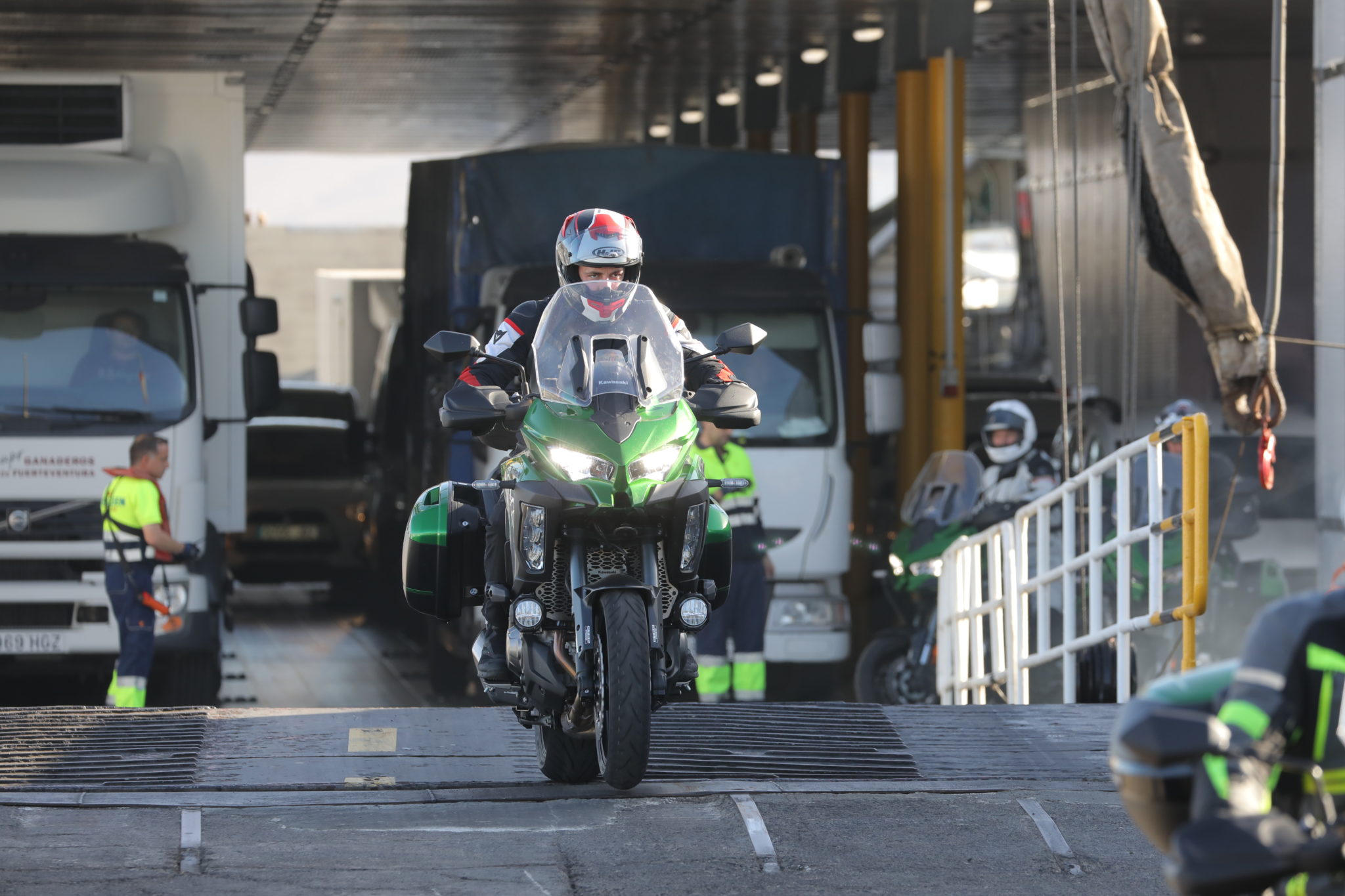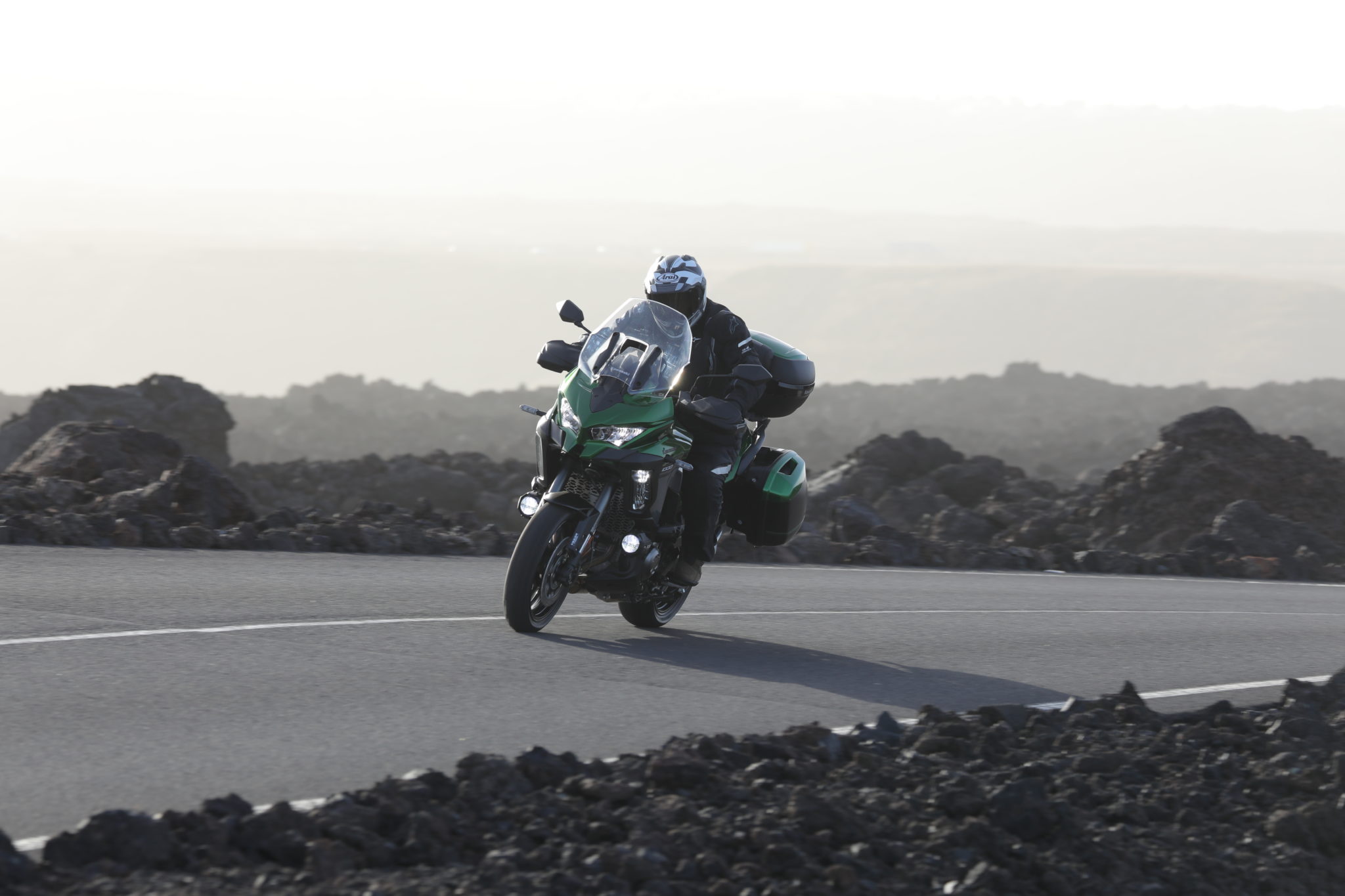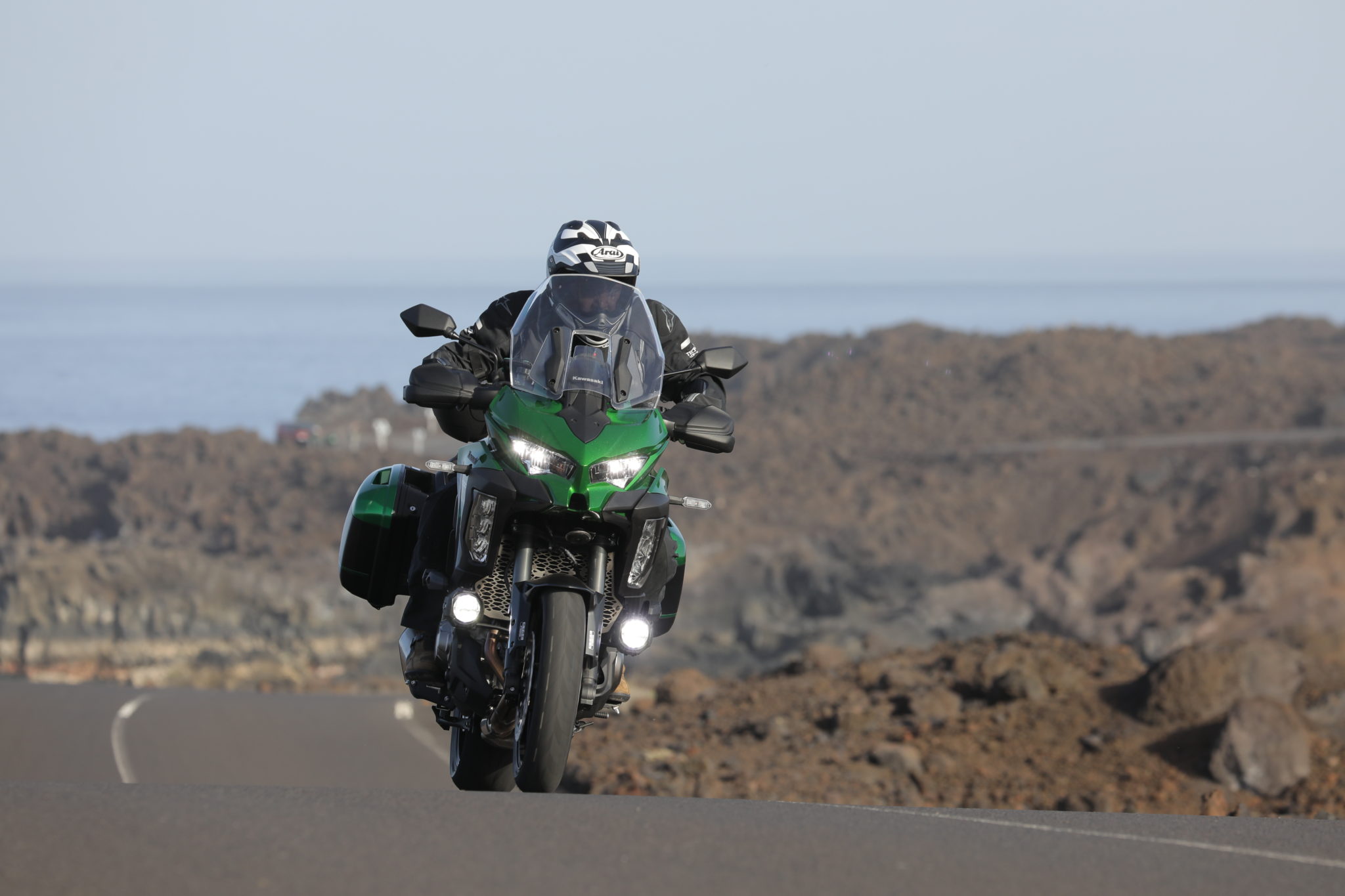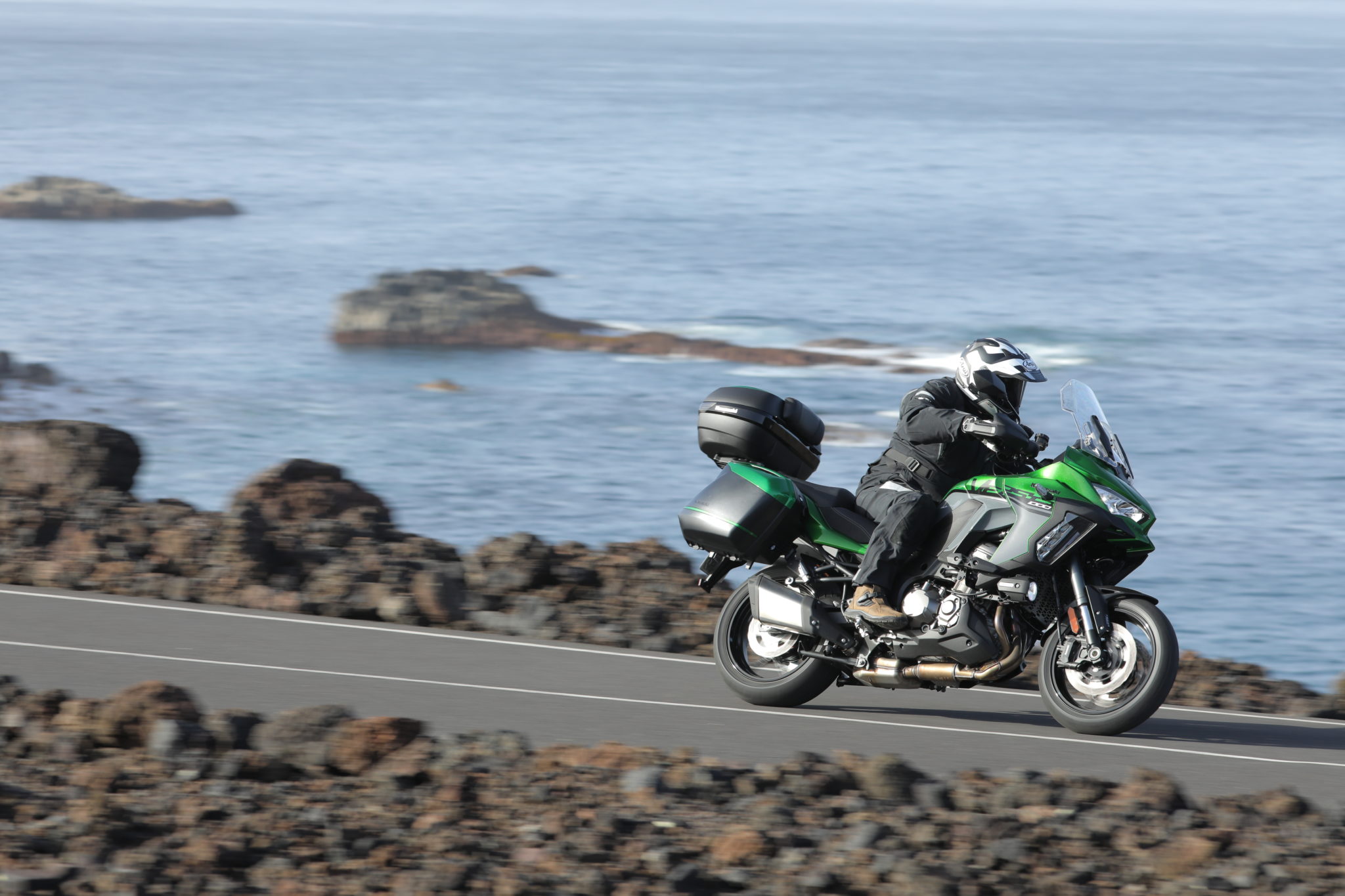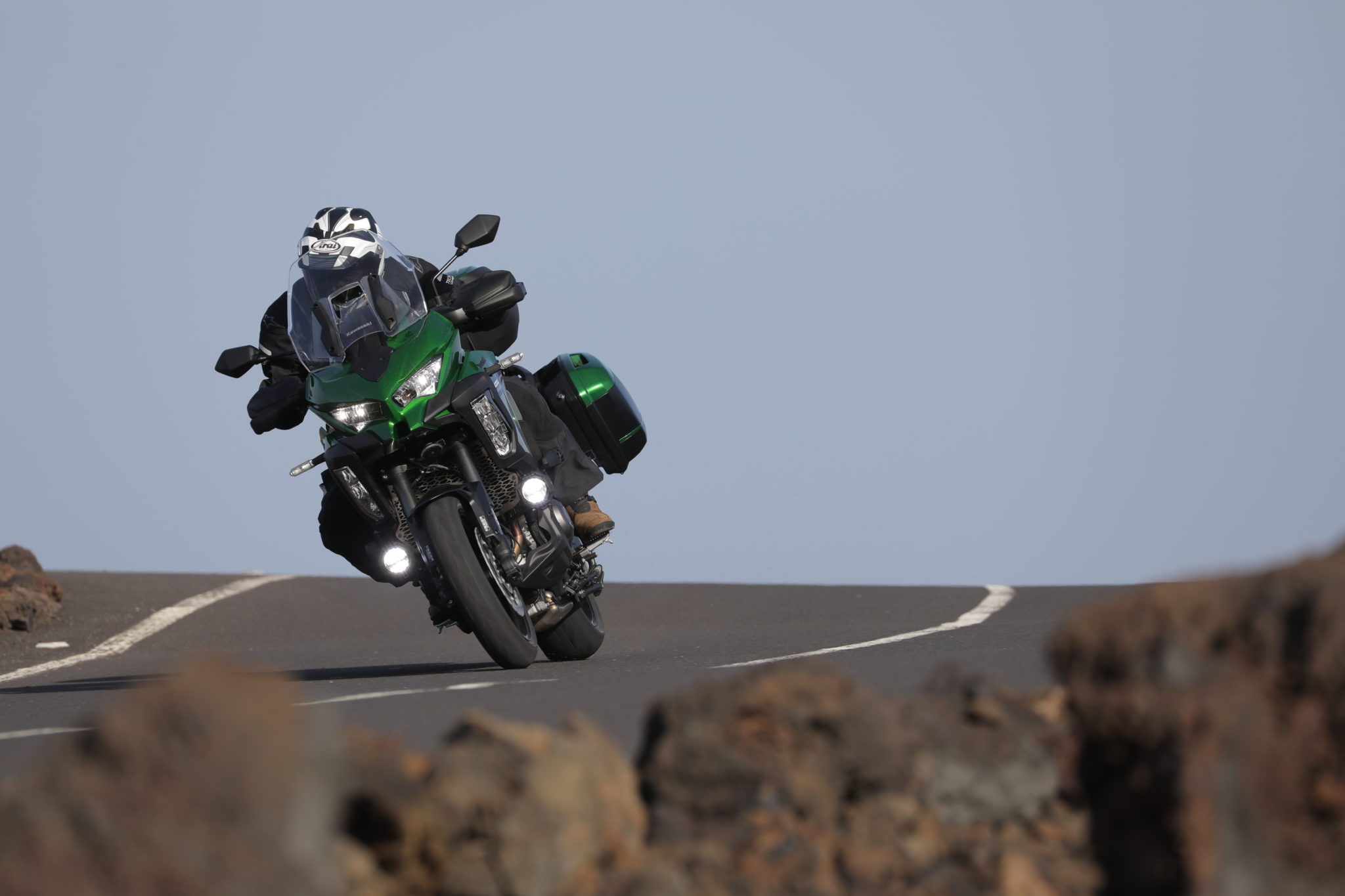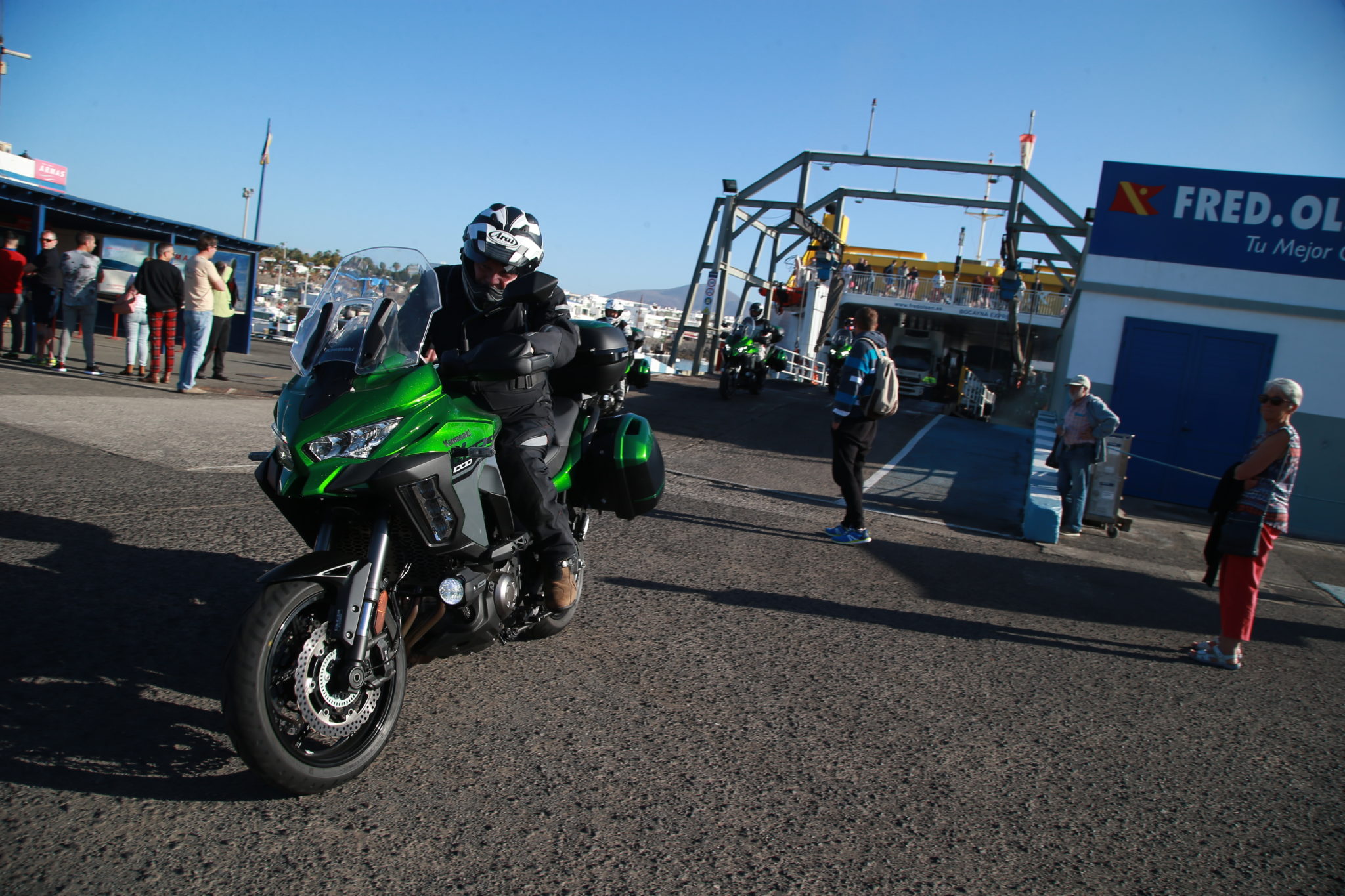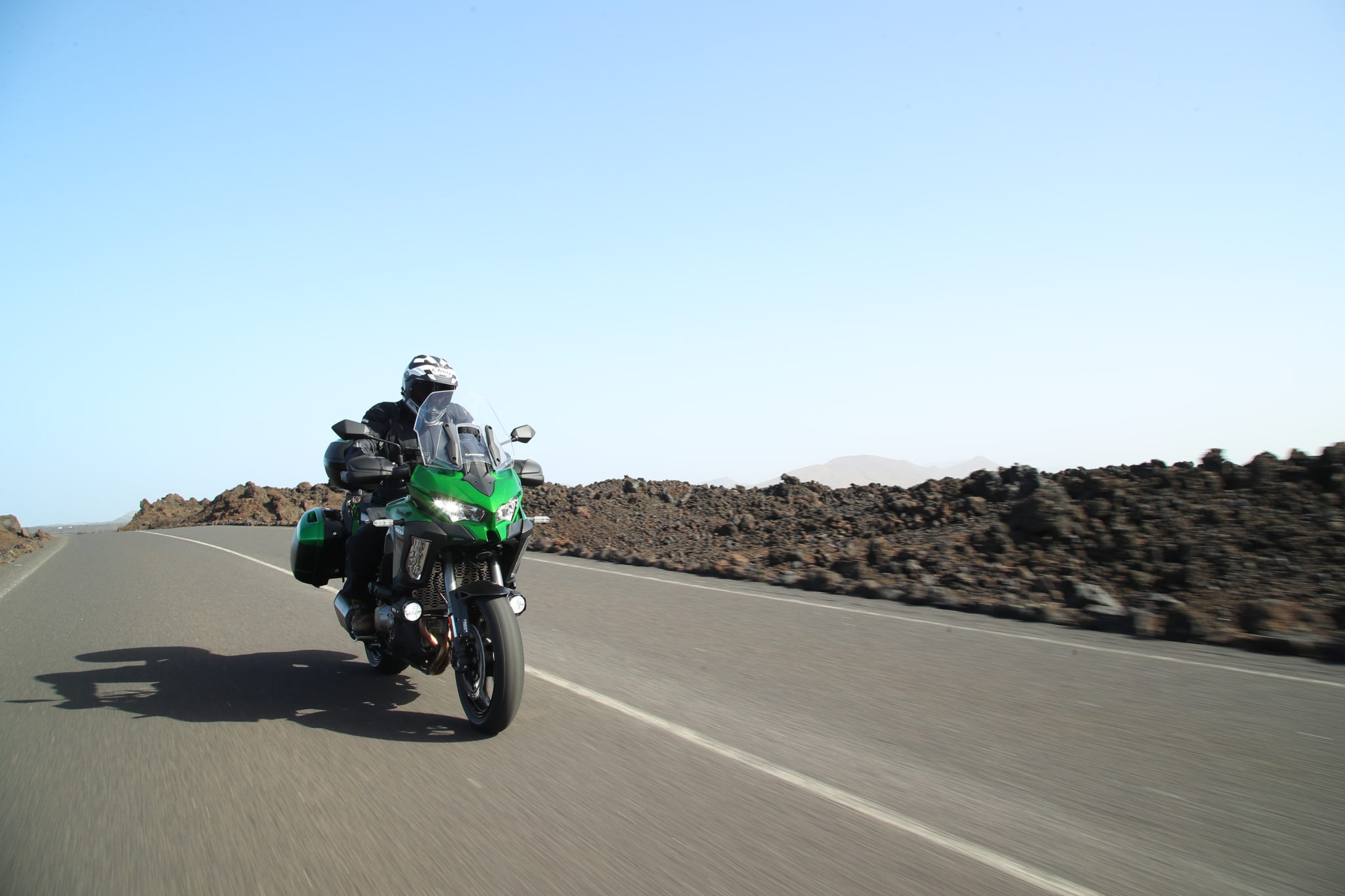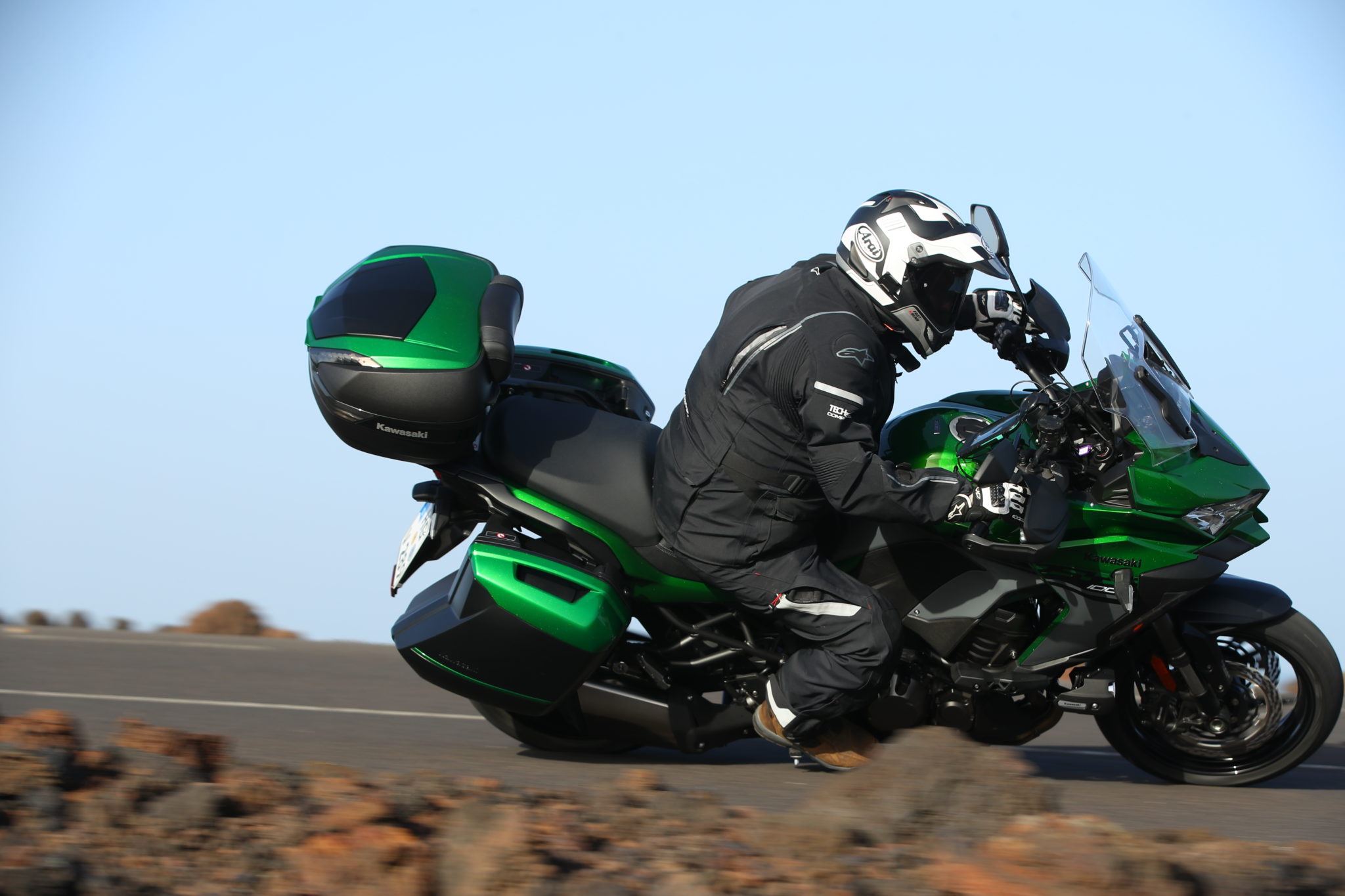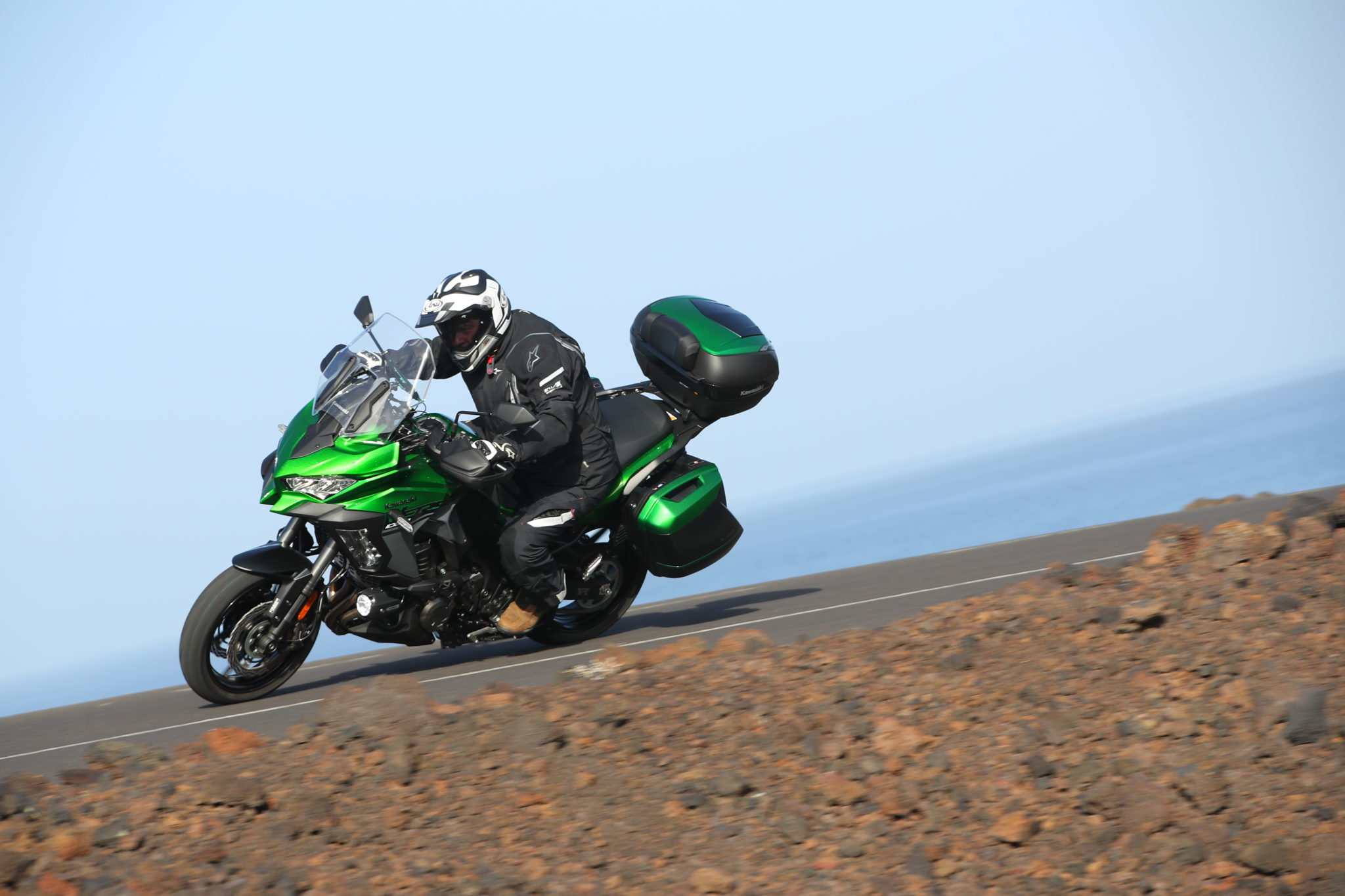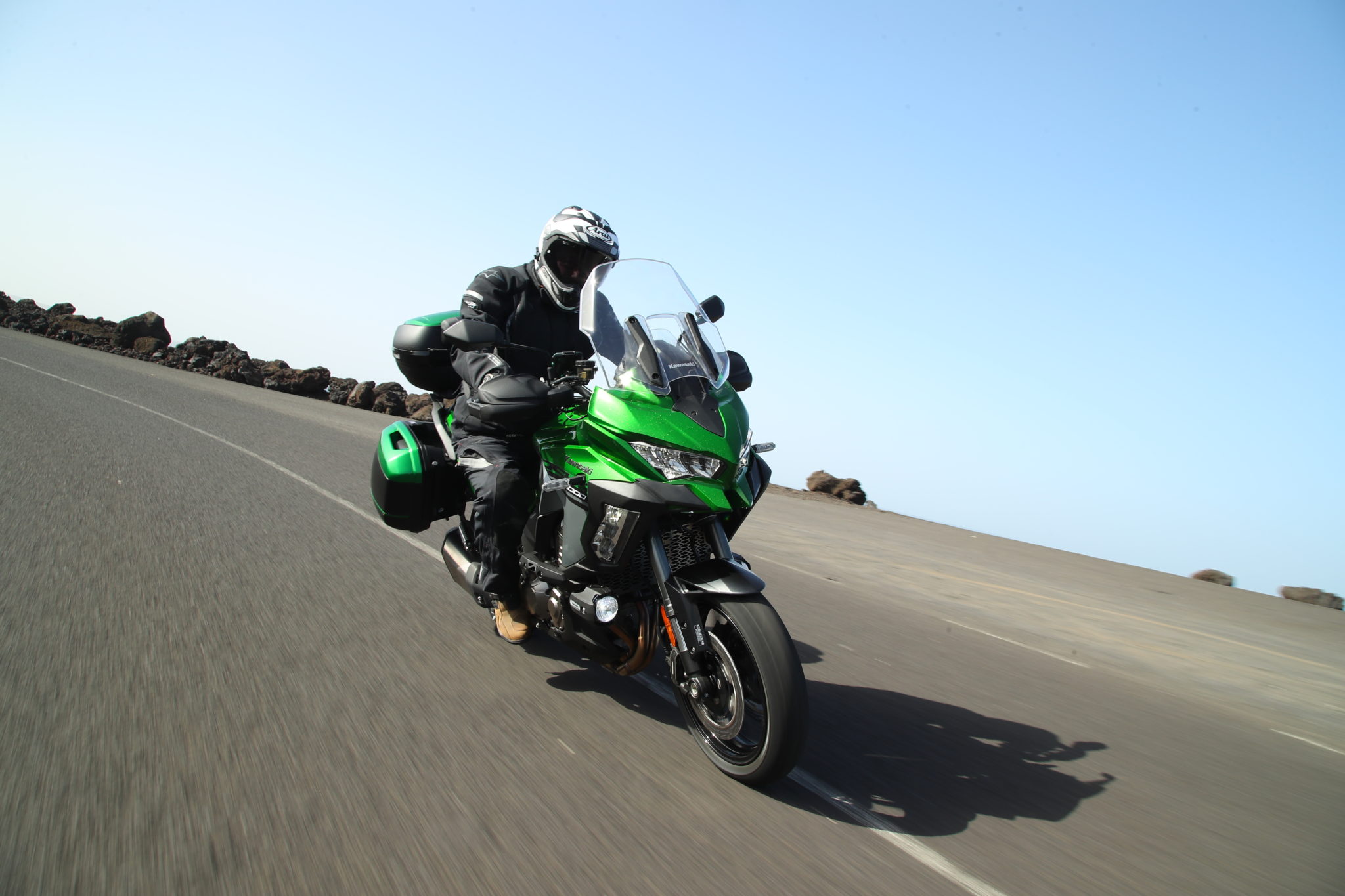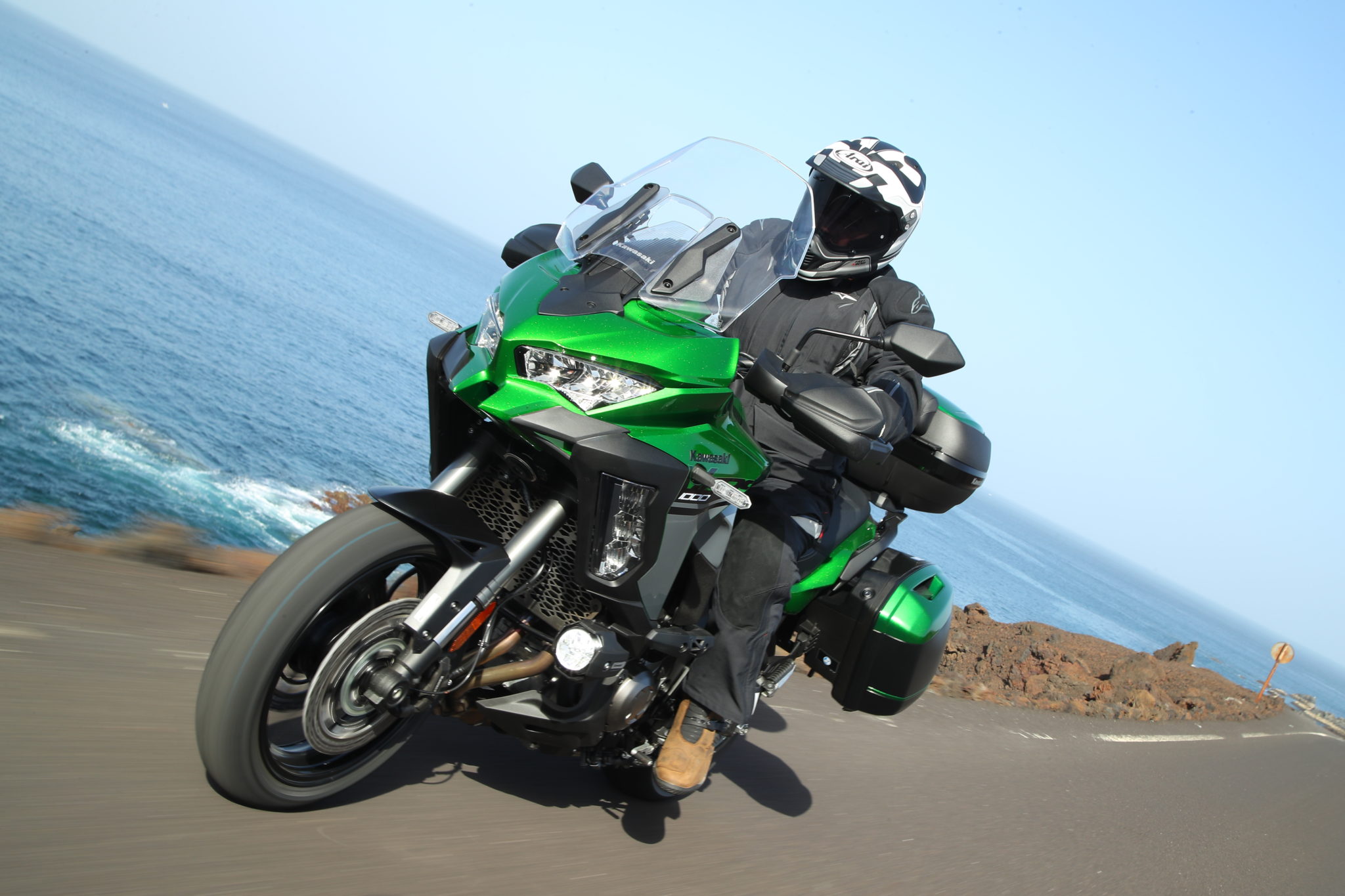Fancy a new adventure bike for 2019? Well, your luck’s in: the choice has never been wider – and there’s something to suit all needs. From the extensive offroad capabilities of the BMW R1250GS Adventure or Honda’s Africa Twin, to more balanced machinery like Triumph’s Tiger range, or the various Ducati Multistrada models.
We’re here in the Canaries to try out a fairly road-biased machine though. Kawasaki’s Versys 1000 doesn’t have the large front wheel, spoked rims, knobbly rubber or super-tall seat you’ll find on more dirt-friendly machines. Rather, it’s a big, comfy, sport-tourer, with long-travel suspension, and an adventure-styled look. That’s exactly what many folk want these days to be fair – the majority of us will spend more than 95 per cent of our time on the Tarmac, with an occasional jaunt up a gentle dirt road the limits to our muddy ambitions.
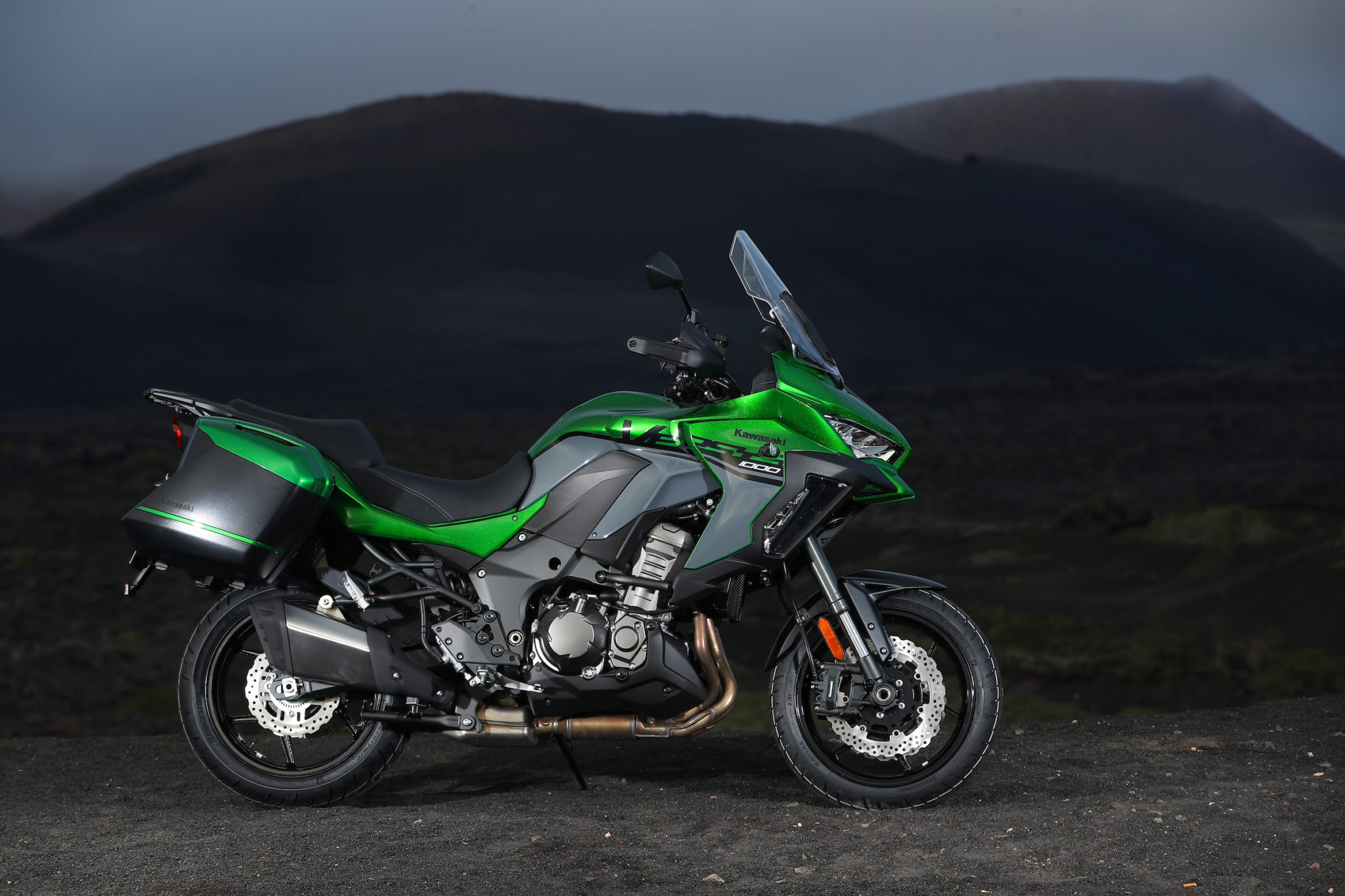
Kawasaki’s showing great ambition for this bike though. It’s given it a host of new technology, especially on the SE version, which has cornering lights, colour LCD dashboard, electronic suspension, and much more. Under the new bodywork we get the same 1,043cc inline-four engine as before, bolted to an aluminium frame and swingarm. The motor now has ride-by-wire throttle valves that facilitates a new cruise-control setup, but the power and torque output is unchanged.
We’ve got a couple of days to find out how the new Versys goes, kicking off in Lanzarote before grabbing a ferry to Fuerteventura for an overnight stay there, then heading back to Lanzarote and home. Two days, a few hundred kilometres on the road plus a brace of boat trips – sounds like the perfect mini-adventure…
And straight away, the Versys feels like the perfect bike to have it on. We’re riding the Grand Touring version of the SE model, so there’s plenty of luggage space in the three-box hard luggage setup. Once my overnight kit, cameras, laptop, spare gloves, clear visor, packed lunch and Kawasaki-provided first aid kit is all stowed away, I give the new dash and tech setup the once-over.
It’s more familiar than I expect though – I spent a while on Kawasaki’s 2018 H2 SX SE supercharged mega-tourer last year, and much of the Versys SE experience is identical. The colour dash with analogue tacho has the same look, with two different display modes, lean angle readouts, brake and throttle graphics, and loads of useful trip computer info. I love the range-remaining readout (though it disappears when you get to about 15 miles, helpfully…), and the fuel consumption, mpg, air temp and other info is ideal for long runs. There are four riding modes – Road, Sport, Rain and a fully customisable ‘Rider’ mode, and on the SE these are linked into the Showa electronic semi-active suspension system.
Even more impressive is the new Kawasaki ‘Rideology’ smartphone app, which was just launched when we rode the Versys. It’s not fully up and running – some functions seemed to be greyed out, and the Android version hasn’t been released yet, but it looks like a very interesting addition indeed. You can use your phone, connected via Bluetooth to the bike, to alter settings, download riding data logs, and even check out servicing and tuning info. The new app is set to work on most of Kawasaki’s high-end models, and they’ve definitely stolen a bit of a march by getting onto this tech early. A future where you can dial in more power or update ECU firmware over your phone? Sounds good to me.
Enough of all this tech though – it’s time for a ride. We’re heading to the lava fields of Lanzarote for some pics and video first, so it’s a steady cruise behind the Kawasaki guide for the first half-hour or so. I settle in quickly: the Versys seat isn’t too high for my (short) legs, the adjustable windscreen keeps the breeze at bay, and the big Z1000-based engine is smooth, with plenty of low-down urge.
The Showa electronic suspension is doing a grand job, especially on the hundreds of traffic-calming humps all the way out of our hotel car park and through town. It’s similar to the system used on the latest ZX-10R SE, but with a more touring bias. There’s no compression damping adjustment, and the forks use manual preload adjusters still, but the rear shock has a motorised preload adjuster, which lets you change setups for pillion and luggage loads at the push of a button. Nice.
It’s steady away then, until we get to the twisty coast road where the snapper are, and we have a bit more of a go. The big Kawasaki is much more agile than you might expect, and the steering feels really light, so it’s easy to muscle about through the bends. The Bridgestone T31 rubber is also working well – although it’s not getting too tough a test on this hot, dry, grippy asphalt – and the lean-angle readout soon starts to creep up as tyres and rider get warmed up. You’re over a fair way before the pegs start to skim the road, and I feel like I could push the Versys a lot harder without any problems.
Pics over, and we’re let off the launch leash for a bit. The TomTom satnav has the ferry port programmed in as the destination, and with a couple of hours before sailing time, Lanzarote is my oyster, as it were… I head inland, with no particular route in mind, just following my nose and getting to grips with the big Kawasaki.
There’s plenty of good stuff – as well as the slick suspension and ample riding tech, there are some new brake calipers up front, and they do a very good job. The cruise control works well, once I worked out that there’s no ‘active’ light on the dash, you just press the buttons and it engages. And switching between the riding modes reveals very different characters to them: the ‘Rain’ mode is crushingly slow, and the suspension feels much softer.
The motor is slightly flummoxing me though. An inline-four, 16-valve DOHC Kawasaki engine of 1,043cc *should* be a bit of a monster, you’d think. But it’s a bit flat at the top end. Kawasaki claims 120bhp peak power, which was okay ten years ago. But the class standard is about 40bhp more nowadays: the BMW S1000 XR makes 165 ponies, and the Ducati Multistrada and KTM Super Adventure have 160bhp V-twin lumps. Even the old WW2-style flat-twin Boxer lump in the BMW R1250 GS has 16bhp more than the Versys. What gives?
Okay, 120bhp is enough to nearly double the speed limit, and the Versys is a tourer, not a superbike. But when you’re two-up, laden with luggage, tramping down German Autobahns, say, any extra oomph is always welcome, and it’s an obvious area where the Versys is lacking compared with the competition. It’s not even massively good on fuel to make up for it: my flat-out thrashing average is about 35mpg, while more steady riding gives 45mpg.
The only other area for serious grumbles is the quickshifter – it’s really hit-and-miss, especially on downshifts, and the gear lever itself is really long and flexes like mad when you use it. The overall quickshift experience is fairly poor – and I ended up doing it the old-fashioned way most of the time. While I’m having a moan, the adjustable screen is also fiddly: you need to loosen then tighten a knob on both sides, which is tricky while riding, and not as good as the one-handed options on bikes like the Yamaha Tracer 900.
I’m at the ferry now though, and ready for the 45-minute crossing. We hit Fuerteventura mid-afternoon, and there’s a few hours of daylight for the final ride of the day. And what a ride it is. The roads are fabulous, twisting, mountain routes, with billiard-table asphalt and almost no traffic. There’s not a cloud in the sky, the temperature is a perfect 20-22°C, and the scenery is properly stunning.
And the Versys is playing its part too. The maximum lean-angle display creeps up gradually towards 49°, as the bends tighten, and the tall adventure-tourer chassis tempts me to go further. I’m riding this big old bus like a superbike, squirting out of slow bends on the big waves of torque, hooning down the short straights, then hammering on the brakes, flinging it into a bend, round, and out to repeat again. It seems improbable – and it’s far from what most owners will be doing day-to-day I guess – but the big Versys is a bit of a hooligan when you want it to be. The relatively low-tuned engine isn’t a problem on most of this route, where low- and mid-range urge is more useful, and the Showa suspension is giving a proper magic-carpet ride, yet combines that with slick wheel control. The T31 Bridgestones continue to impress, and by the end of the 100km route, I’m properly grinning inside my Arai lid. Great stuff.
A fantastic Canarian dinner, a couple of beers, and I’m ready for bed. Next morning is an early start to get to the ferry in time to catch our flight home to London, but it’s no hardship on the big Kawasaki. Wafting along at 7.30am, it’s a luxurious place to be, and before I know it, we’re back at the hotel and the ride is done.
Would the Versys be a good choice for the 2019 adventure bike buyer then? Well, if you’re staying on the Tarmac, and want to haul a load of kit plus a significant other, then it’s definitely well worth a look. The tech is excellent, and works really well, for the most part. The chassis is impressive too, with nimble handling, great comfort and strong braking and tyre performance. On the down side, the engine is lacking power compared with the competition – so if that’s important to you, you might want to look elsewhere. The quickshifter is poor, and the custom ‘Rider’ riding mode is useful, but the dash is weirdly hamstrung when you use it (see ‘Riding Modes’ section below).
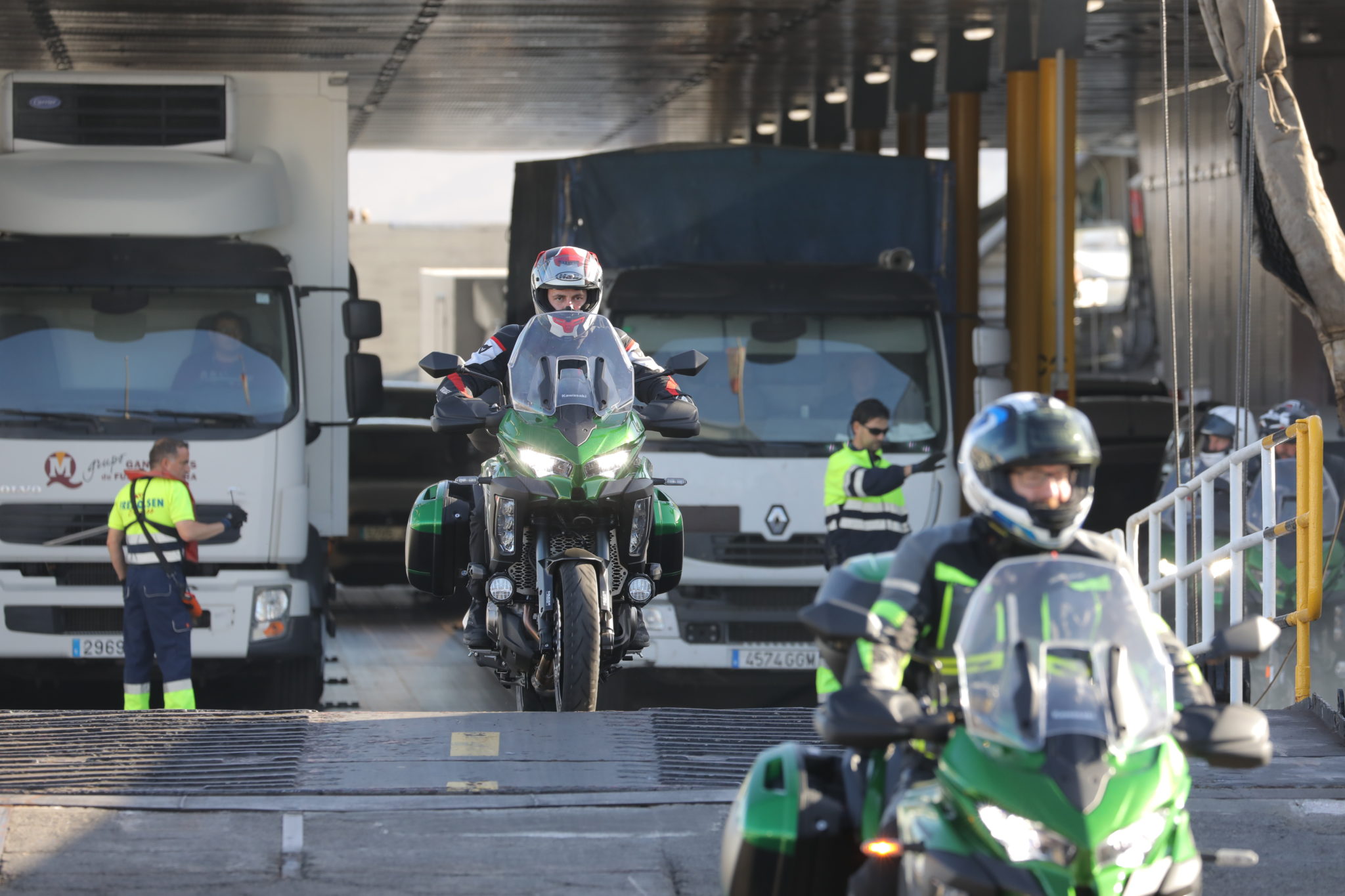
But as an overall package, the SE GT we rode feels massively capable – you really do feel like you could ride it to the ends of the Earth with no problems at all. Fancy a bit of that? Well get down to your local Kawasaki dealer and book a test ride tout suite…
ENGINE
The same 1,043cc inline-four motor as the Z1000 gets electronic ride-by-wire throttle valves, to allow cruise control. It’s unchanged elsewhere which is a little disappointing: 120bhp is quite a low tune from a litre-plus four these days. Soft cams, very low compression ratio and low peak revs seems to be responsible – it’s like a ‘detuned’ naked bike from the early 2000s. As I used to say back then, I’d rather have a full power tune, with lowered gearing to provide the extra low-down urge… It does have a smooth, torquey delivery though.
FRAME
Cast aluminium twin-spar design made from five pieces welded together.
SUSPENSION
The base Versys thou’ gets a rebound- and preload-adjust fork and shock package, with a remote hydraulic preload adjuster on the back. The Versys 1000 SE uses Showa electronically-adjustable semi-active suspension, with a manual fork preload adjuster, and a motorised preload adjuster on the shock.
BRAKES
New Z1000-style calipers on the front – radial-mounted four-piston units, with Kawasaki’s take on the Bosch IMU-assisted cornering ABS.
RIDEOLOGY APP
An intriguing glimpse into the future: Kawasaki launched its ‘Rideology’ iPhone app on this launch, which connects to the SE version via a Bluetooth chip in the dash.
The app has a host of useful features: you can upload setting changes, log trip data on the phone, even (potentially) tweak power in future. It’s interesting, though didn’t seem to be totally finished yet – the Android version isn’t available at the moment, and some functions seemed to be blocked. The possibilities are very exciting though, and once it’s fully up and running, it should be a really interesting addition to the Versys experience (the app also works with Kawasaki’s other high-end models).
SE MODEL
The SE is a big step up – you get cornering lights, colour dash, electronic suspension, and self-healing anti-scratch paint, none of which can be fitted to the stocker. The SE also comes with a load of stuff which is an optional extra-cost fit on the base bike: quickshifter, tall screen, hot grips and handguards.
SPECIAL EDITIONS
In the UK, Kawasaki is selling Touring and Grand Touring editions of both models. The Touring adds panniers, pannier bags, handguards and tankpad, the Grand Touring includes a top box, GPS bracket, fog lamps and frame crash protectors.
RIDING MODES
The SE has integrated riding modes, which alter the electronic suspension profiles, traction control and engine power delivery. A custom ‘Rider’ mode is the only way to tweak the traction settings – but when you use that mode, the dash goes into a weird mode that hides the tripmeter, fuel range, air temp, lean angle and fuel consumption readouts. It replaces the bottom half of the dash with a display of the customised settings instead – and there’s no way round it, except changing back to one of the standard riding modes. This is a bit of a handicap in use, and something I’d hope Kawasaki will change with a firmware update…
SPECS {SE model in curly brackets}
Price: from £11,342 (base model) to £16,042 (SE GT)
Engine: DOHC 16v, inline-four, l/c, 1,043cc
Bore x stroke: 77x56mm
Compression ratio: 10.3:1
Max power (claimed) 120bhp@9,000rpm
Max torque (claimed) 75ft lb@7,500rpm
Transmission: six speed gearbox, wet slipper assist clutch, chain drive
Frame: aluminium twin-tube diamond type
Front suspension: 43mm USD fork, rebound and preload adjustable {KECS electronic Showa semi-active fork}
Rear suspension: aluminium swingarm, monoshock, rebound damping and remote preload-adjuster {KECS electronic semi-active Showa shock}
Brakes: twin 310mm discs, four-piston radial calipers (front), 250mm disc, single-piston caliper (rear), Bosch cornering ABS.
Wheels/tyres: cast aluminium/Bridgestone T31, 120/70 17 front, 180/55 17 rear
Rake/trail: 27°/106mm
Wheelbase: 1,520mm
Kerb weight: 253kg {257kg}
Fuel capacity: 21 litres
Equipment: IMU-based traction control and cornering ABS, cruise control, four power modes (Rain, Road, Sport and user-customisable), manual adjust windscreen. SE has colour dash, electronic semi-active suspension, integrated rider modes with suspension, stock quickshifter (accessory on stock bike), cornering lights, heated grips, and hand guards

